Theoretical grammar of the English language The system

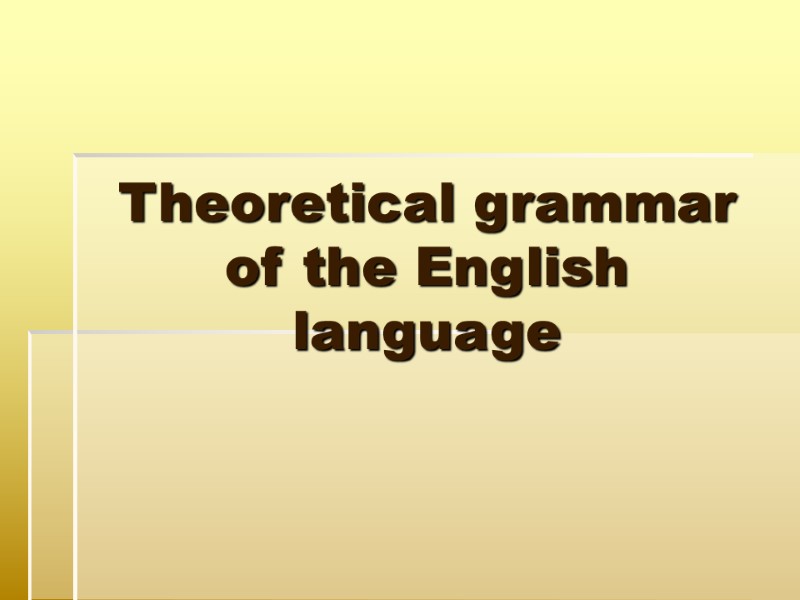
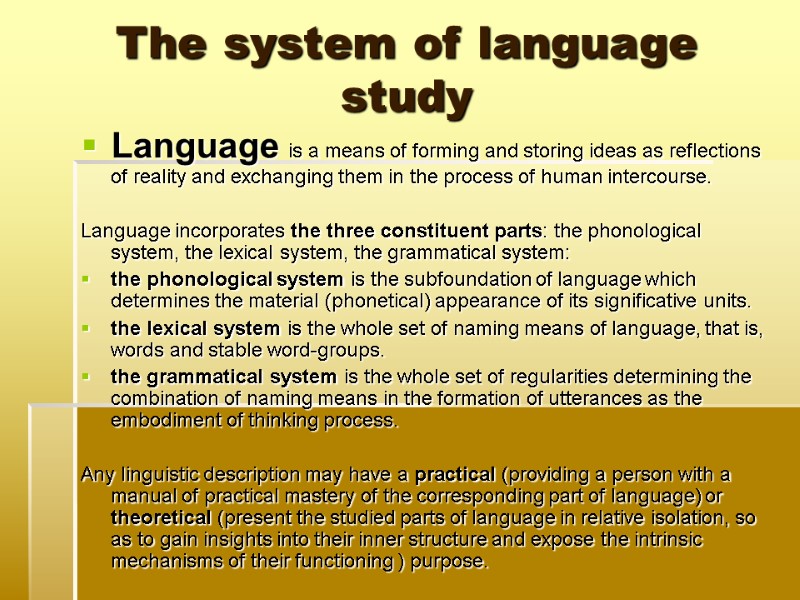
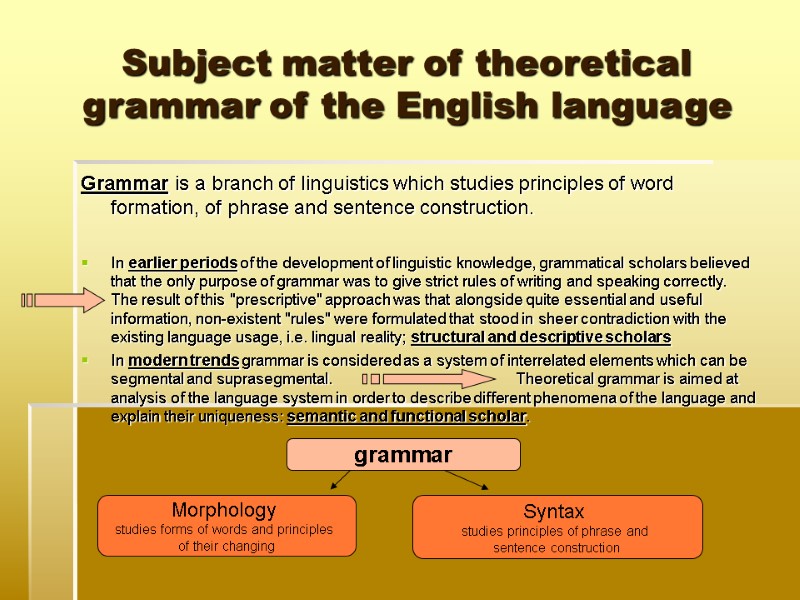
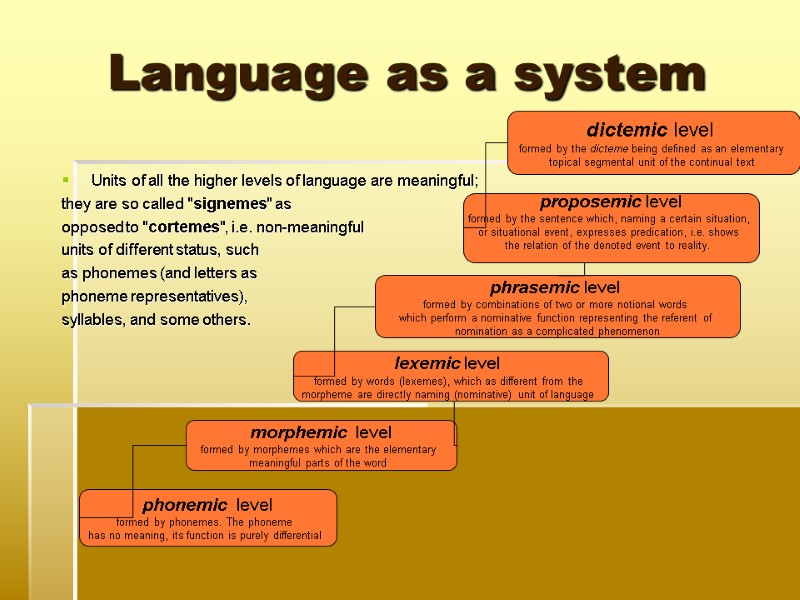
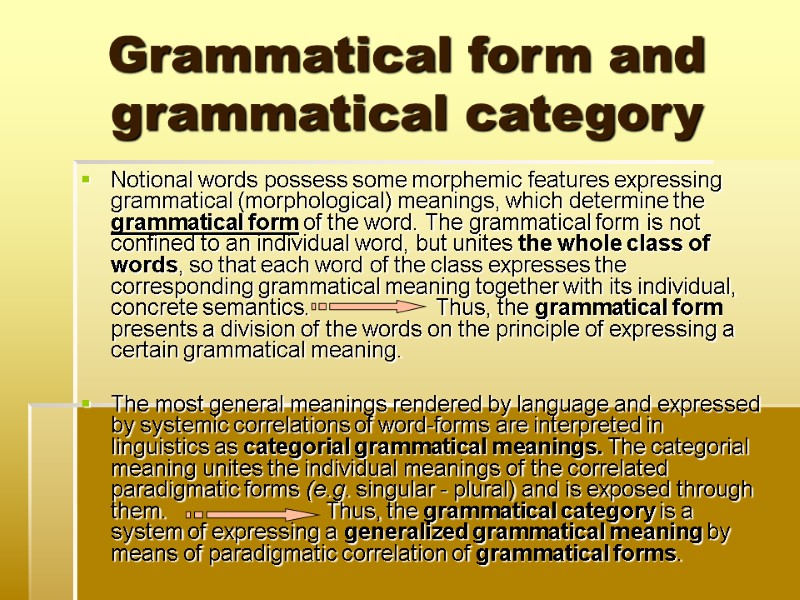
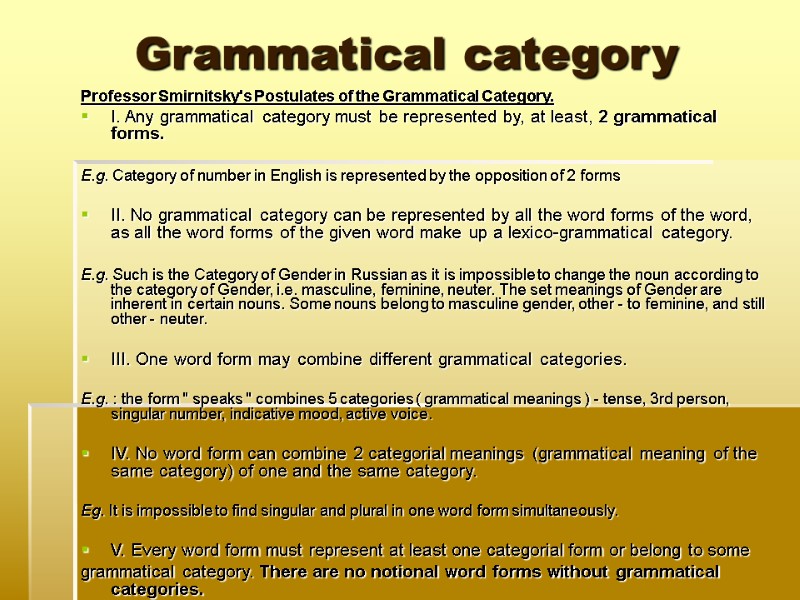
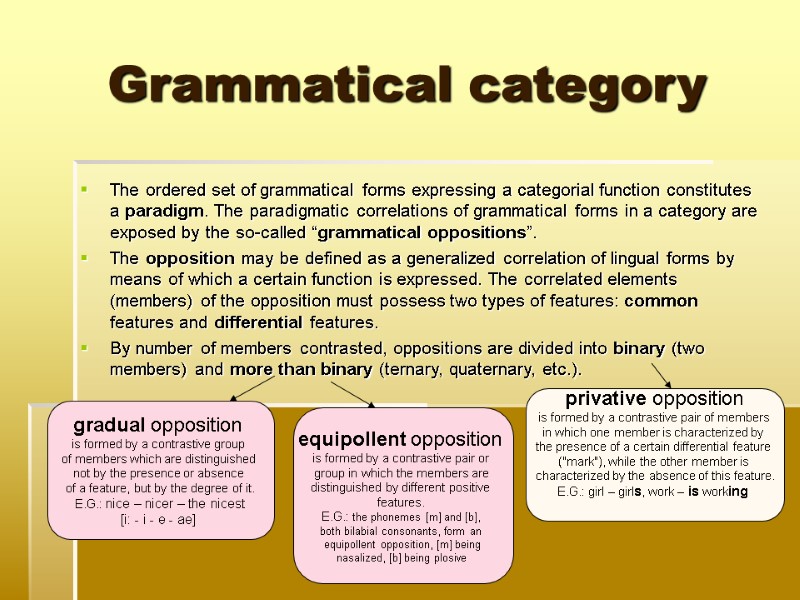
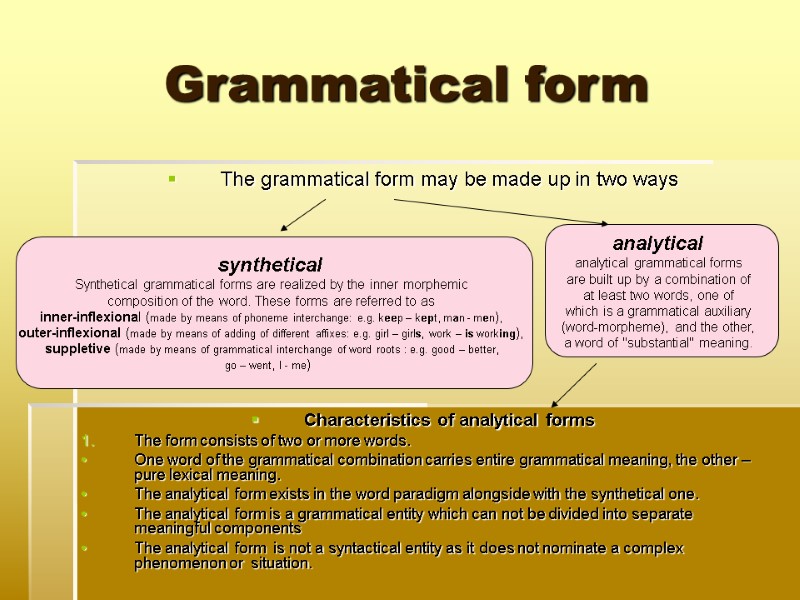
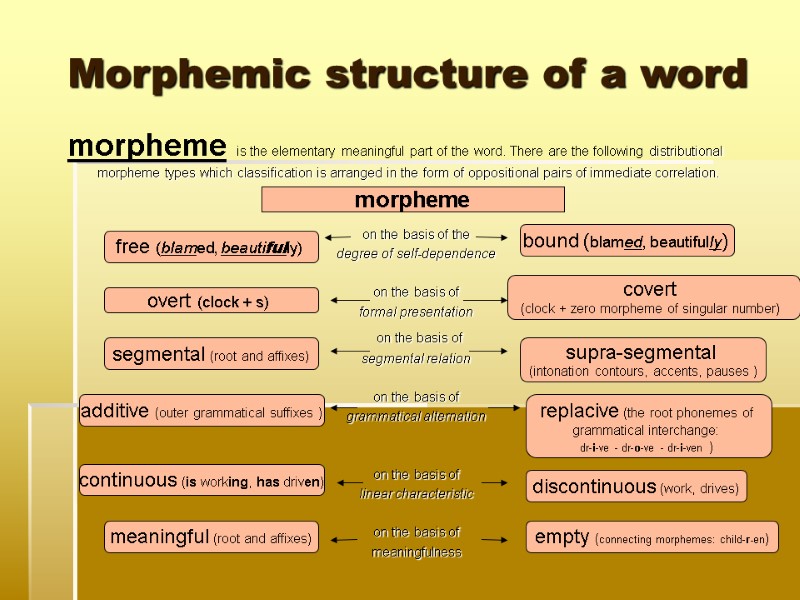

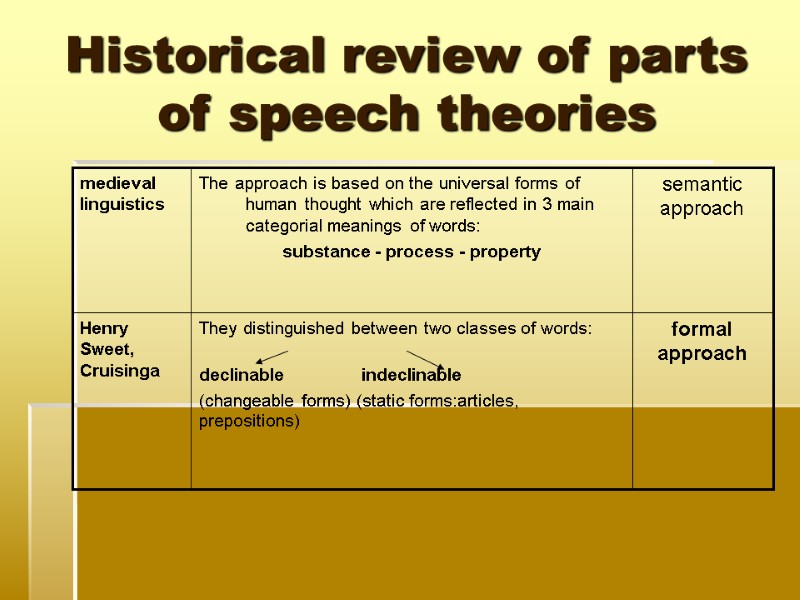
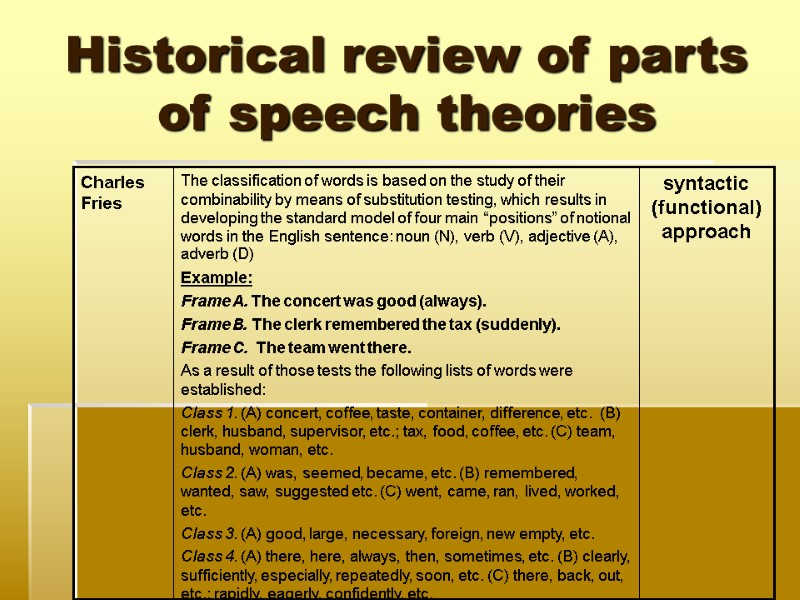
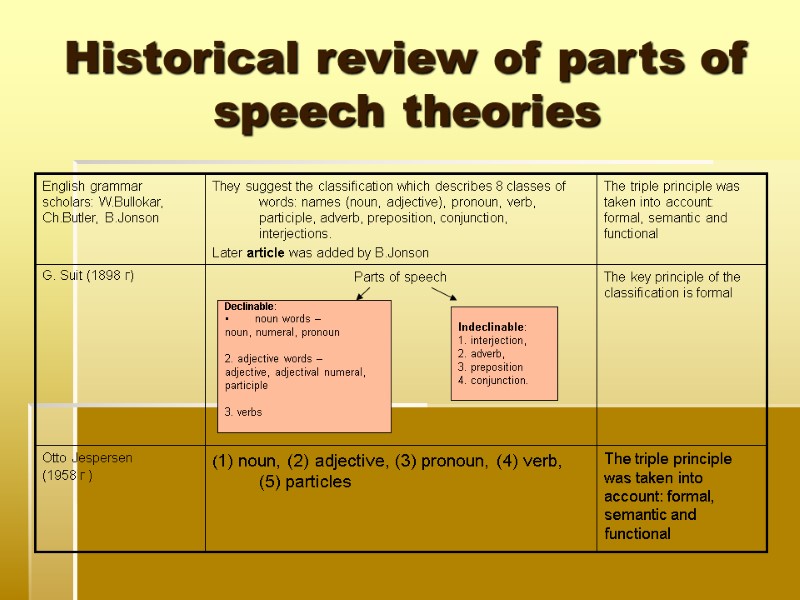
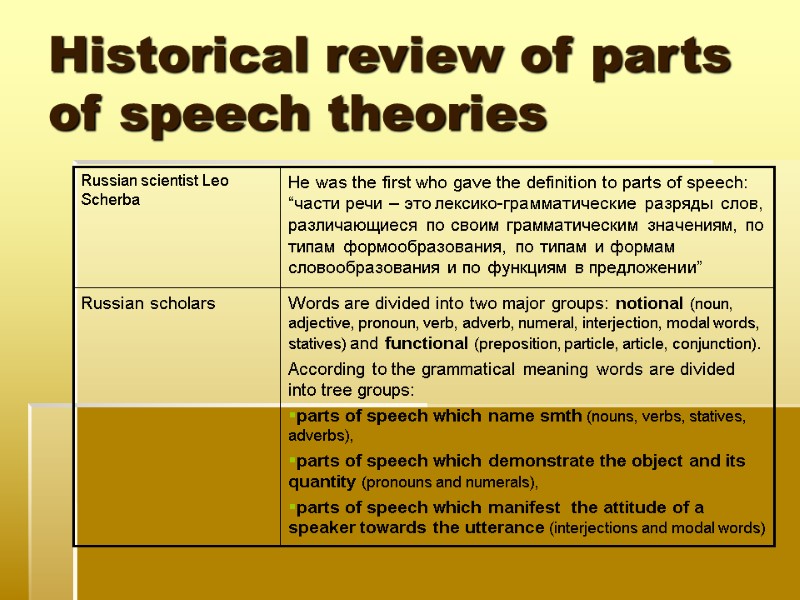
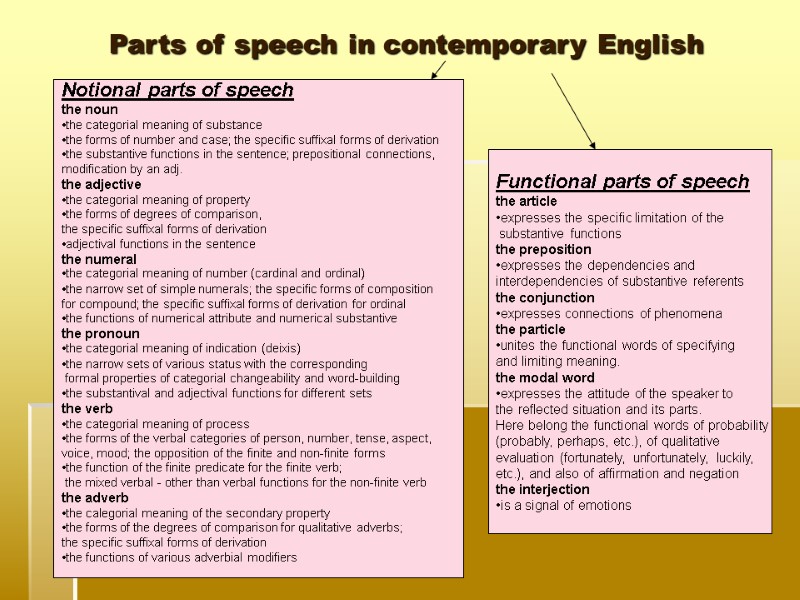
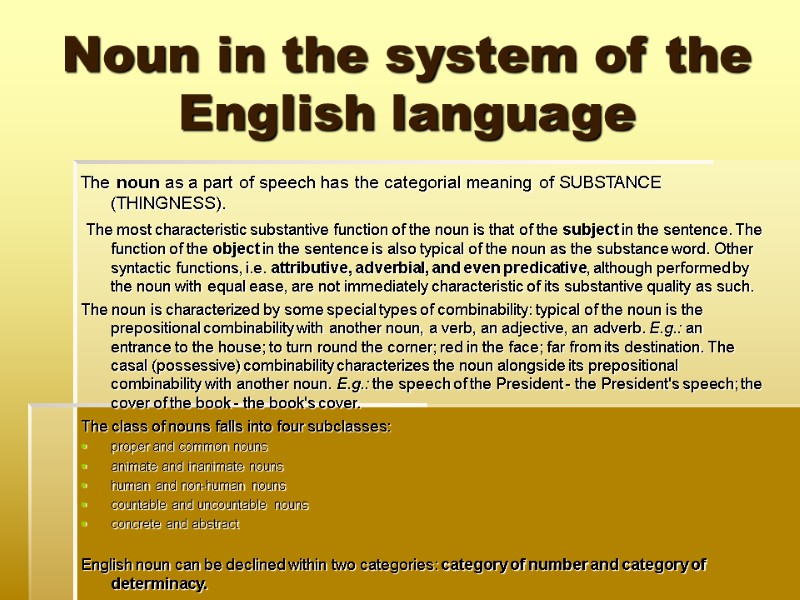

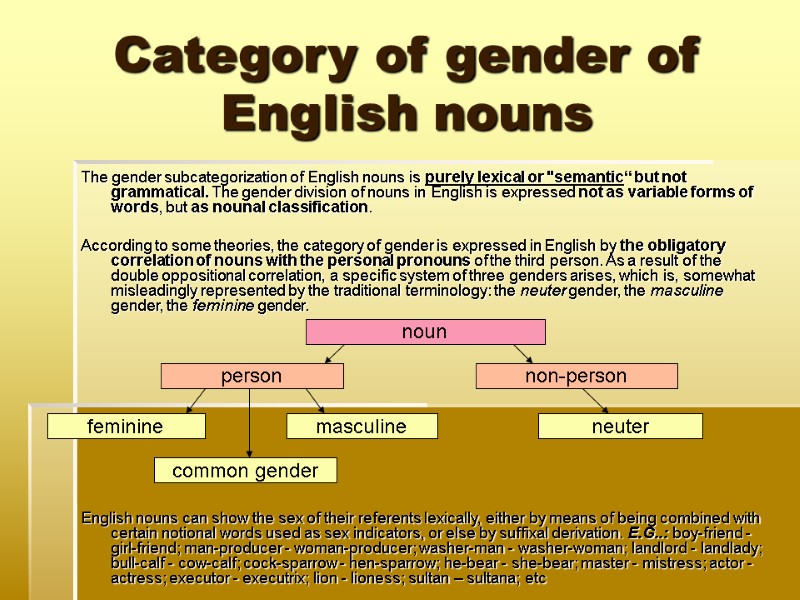
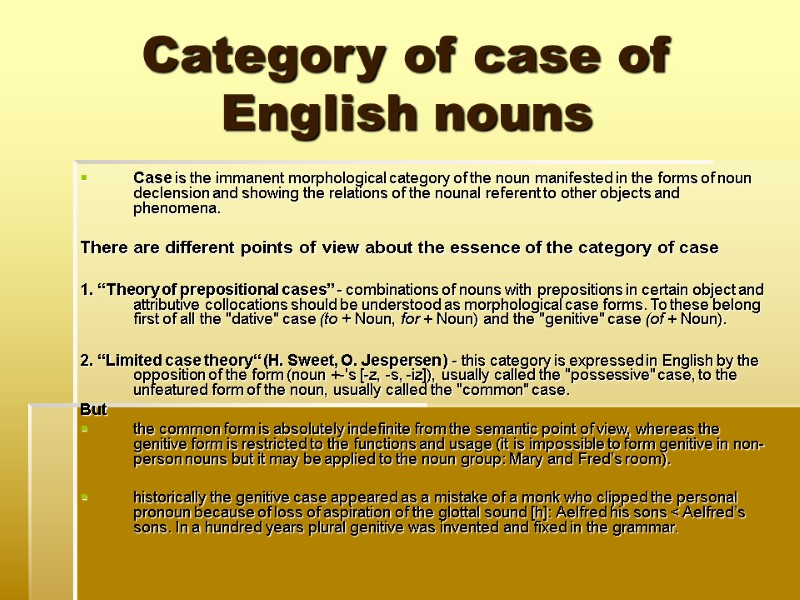


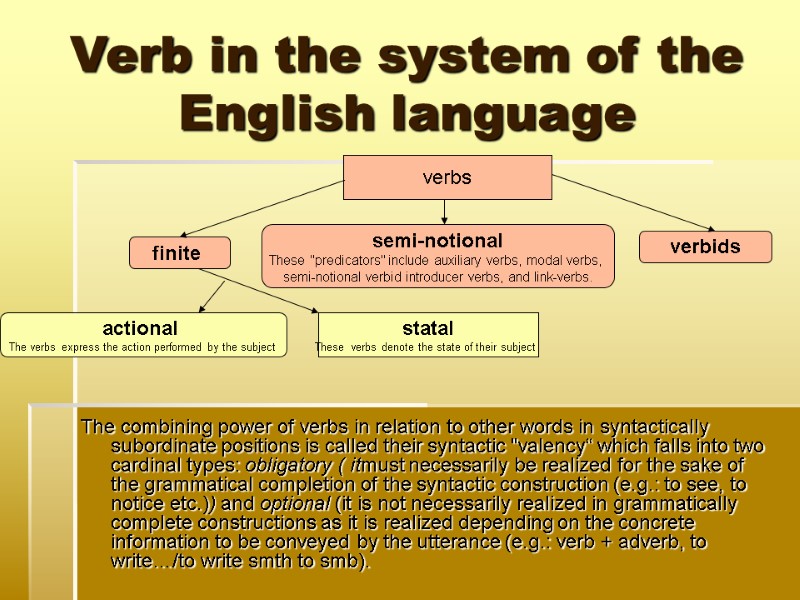
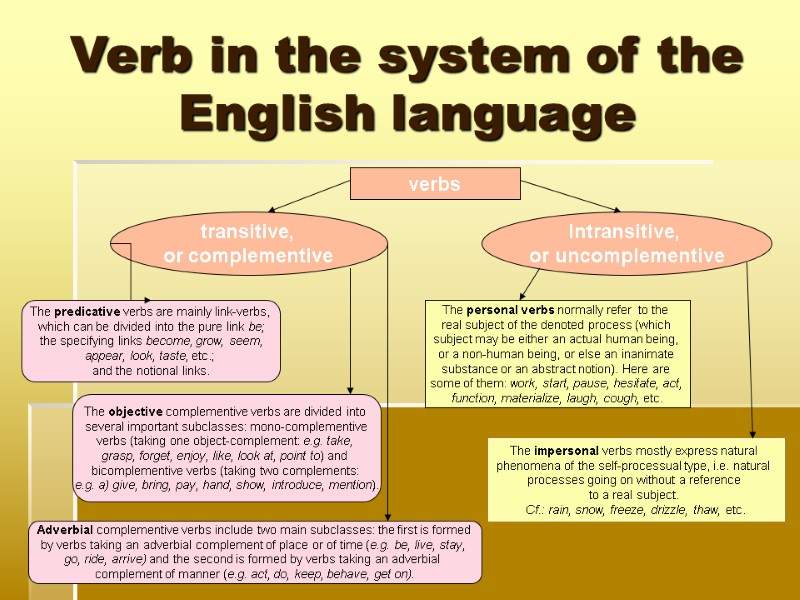
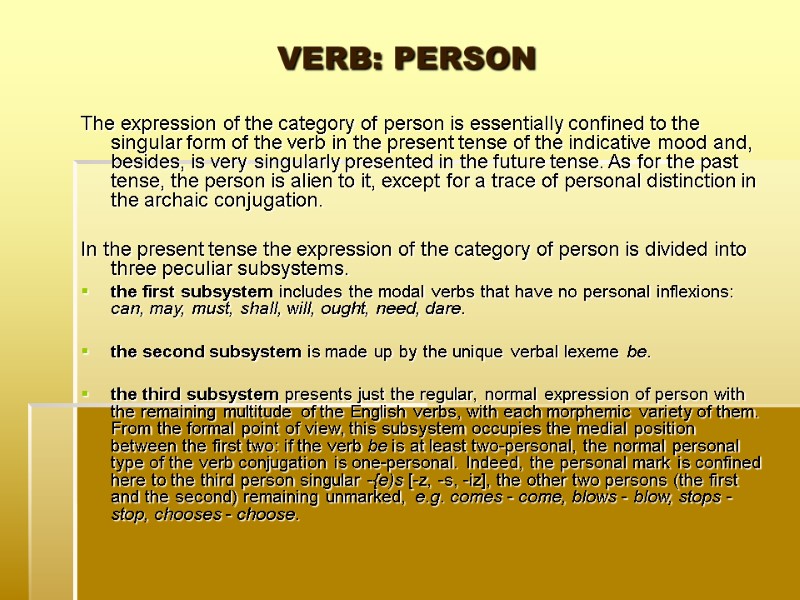
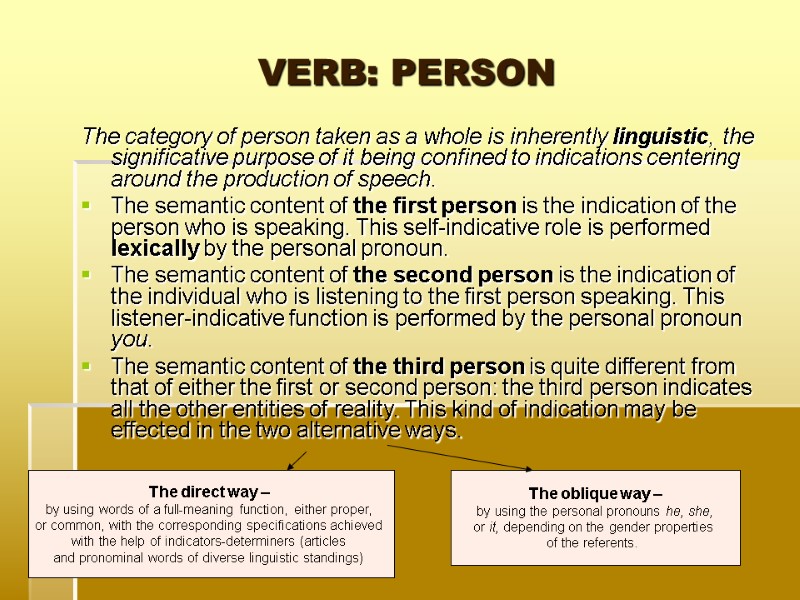
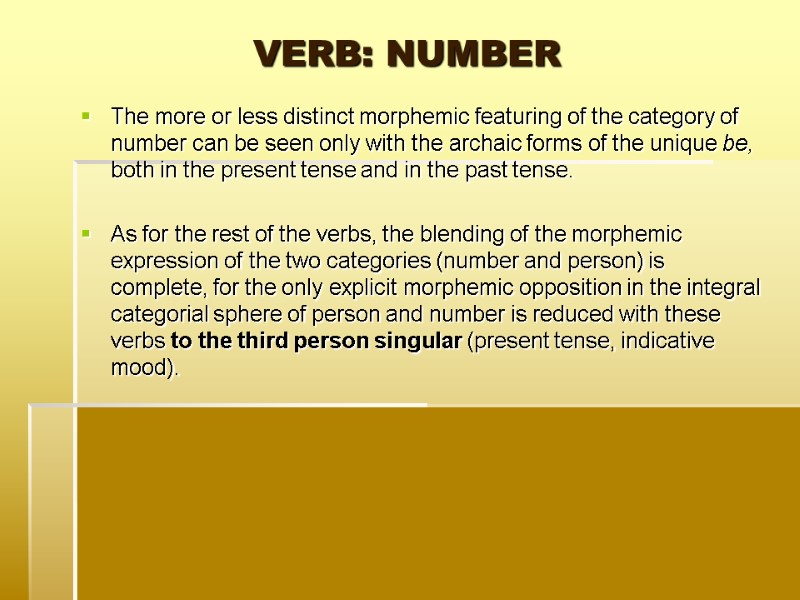
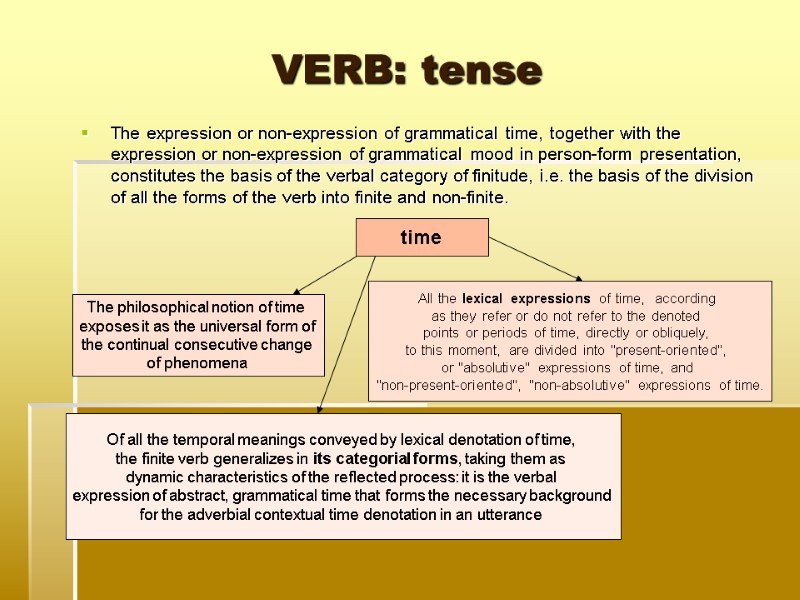
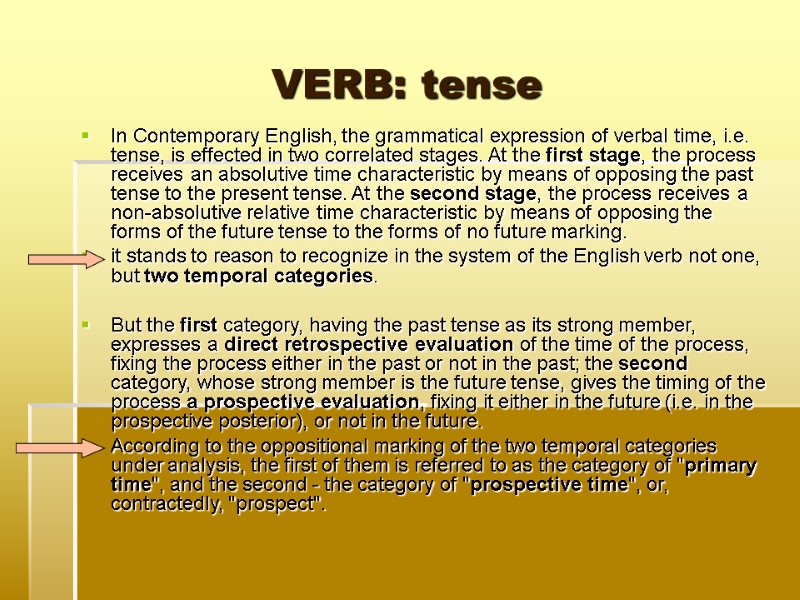
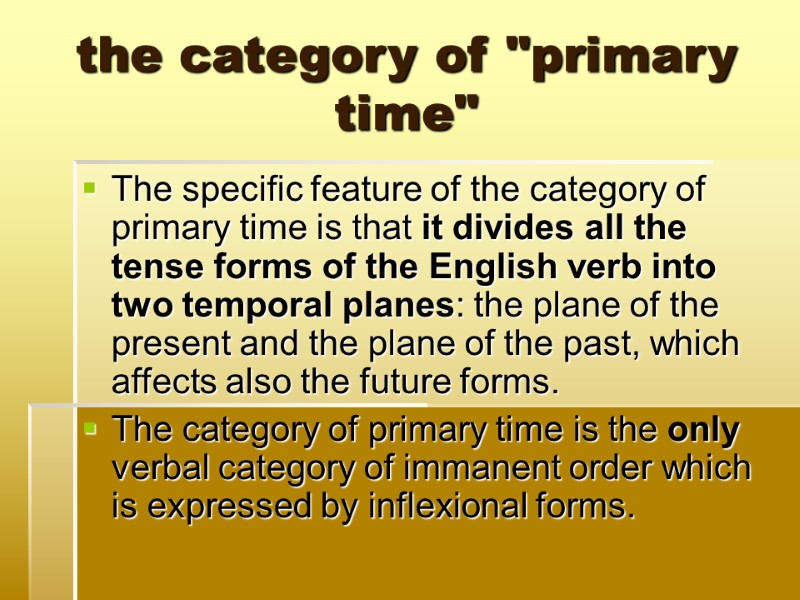
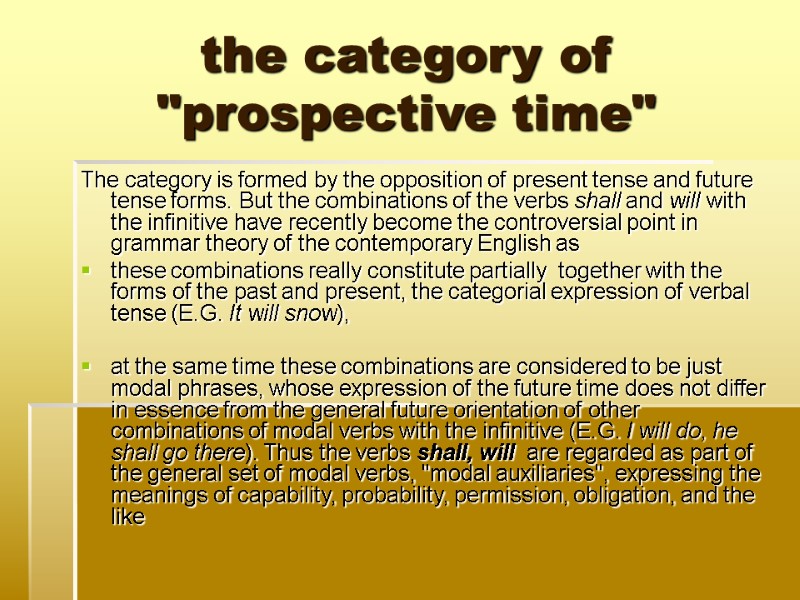
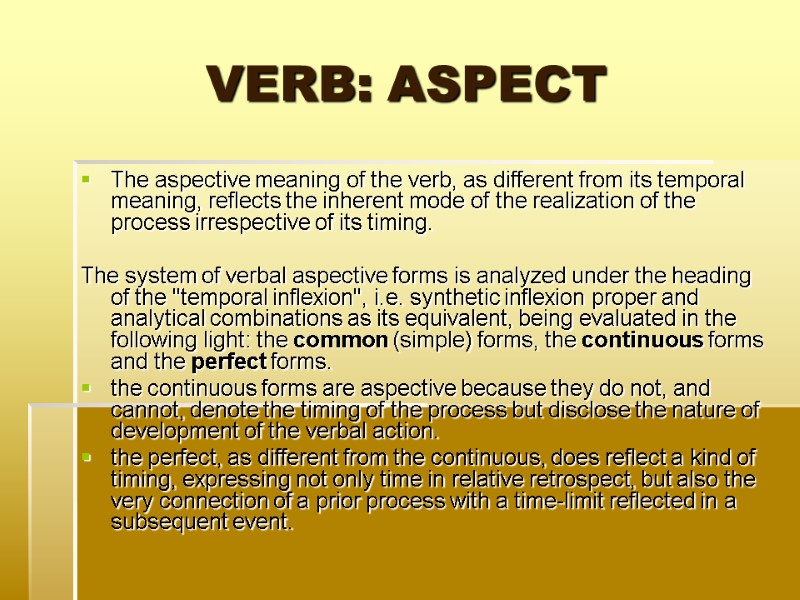
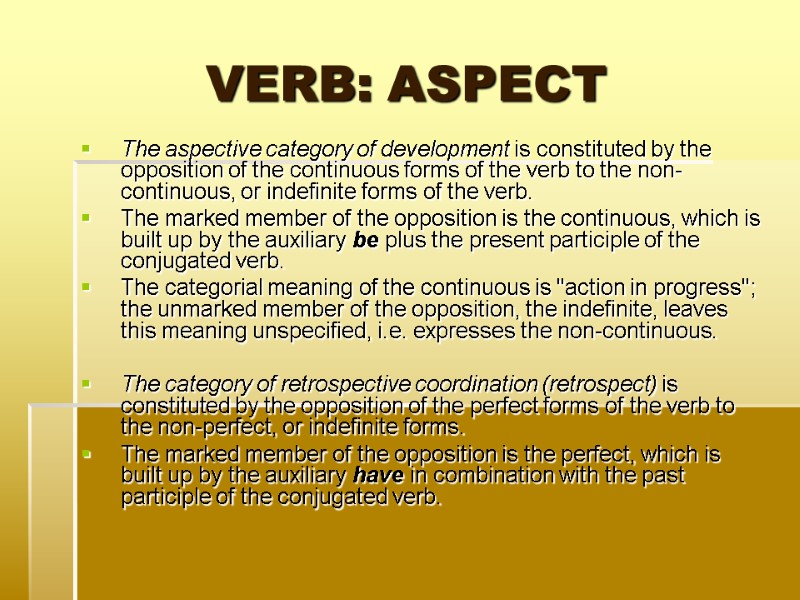
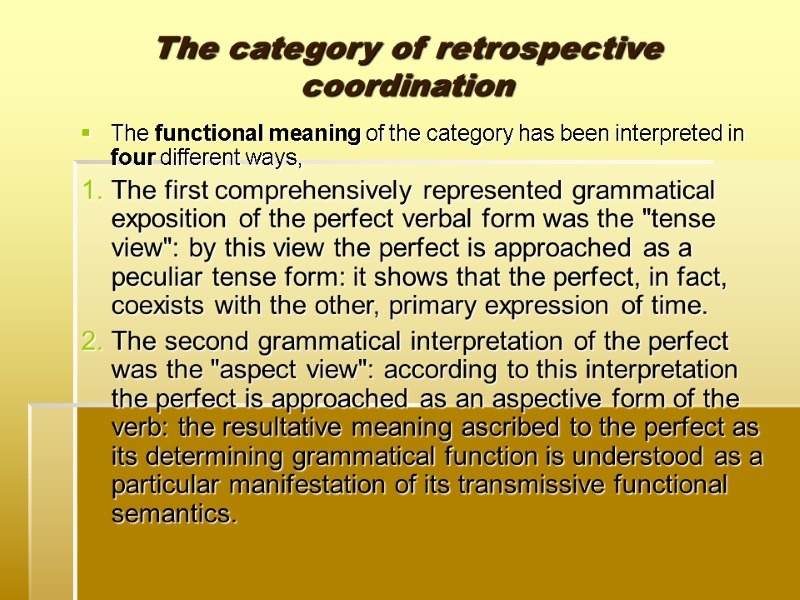
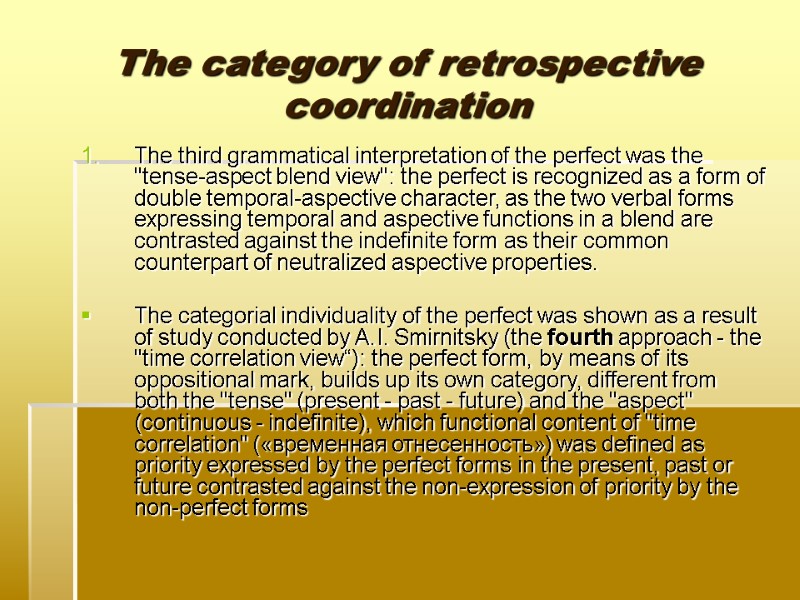
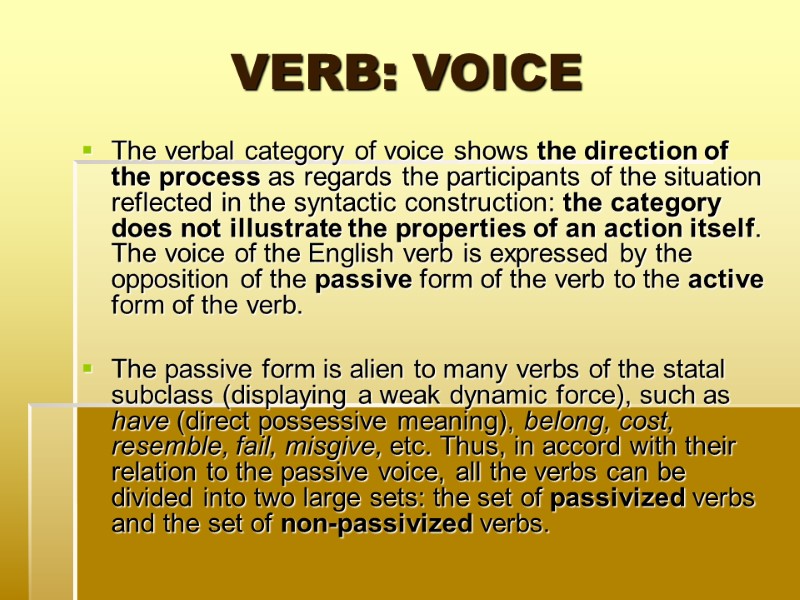
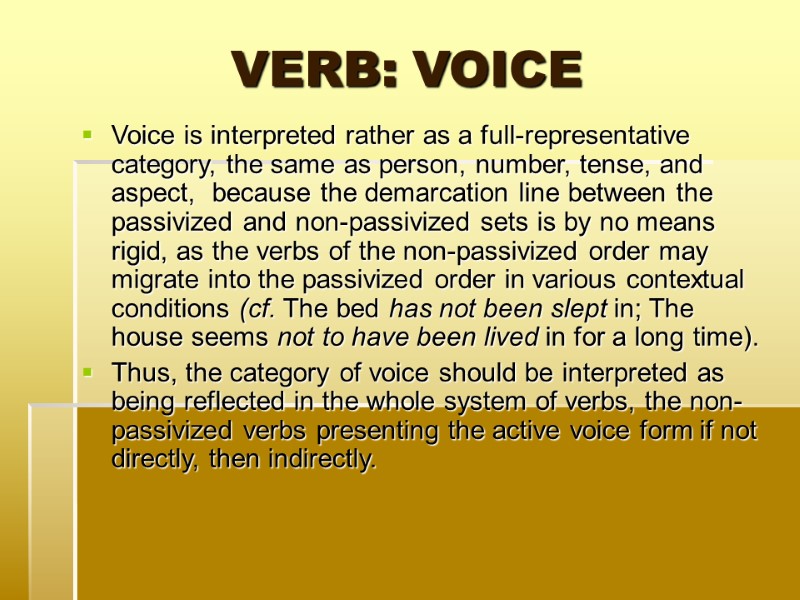
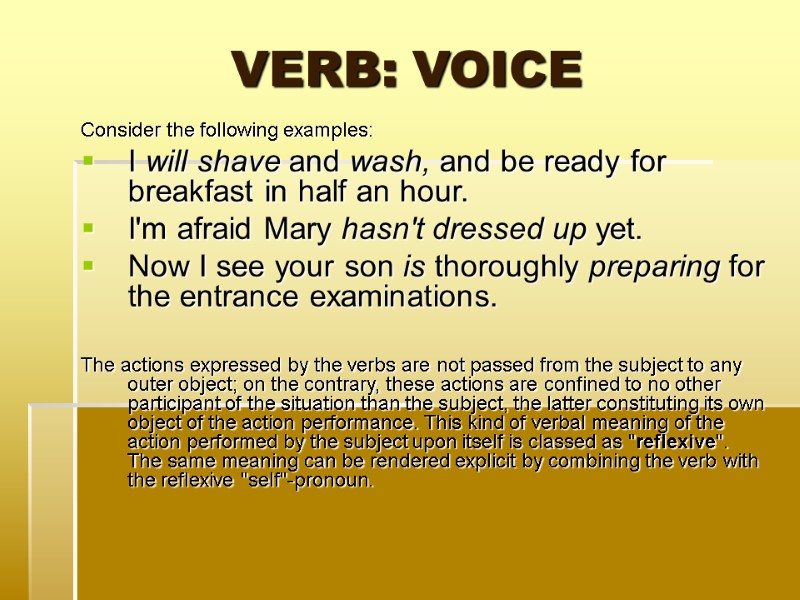
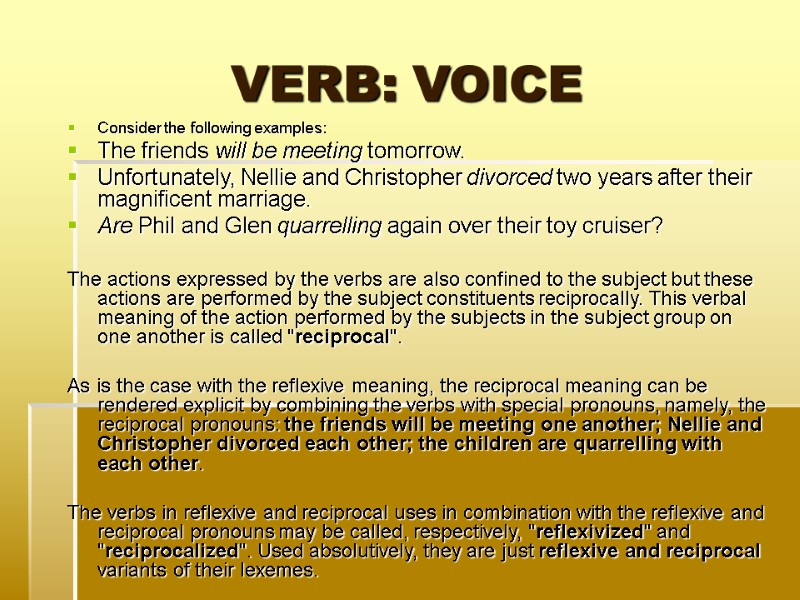
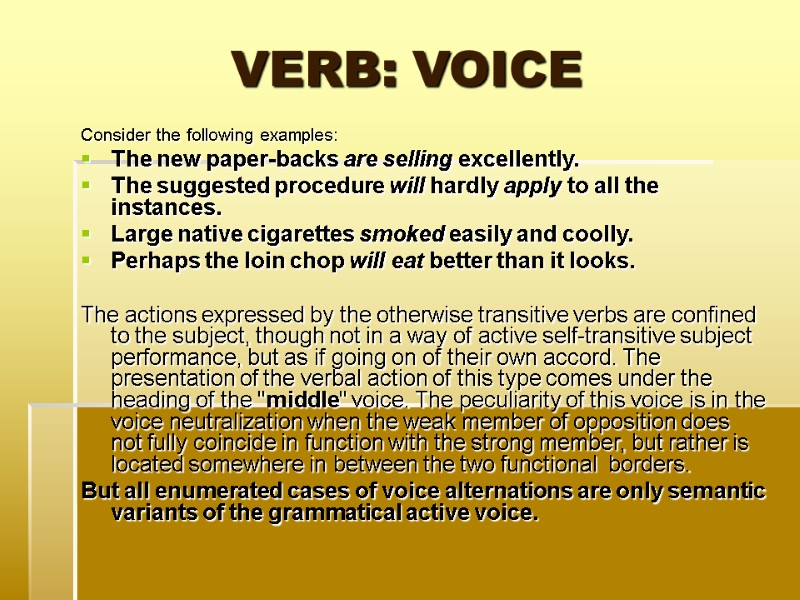

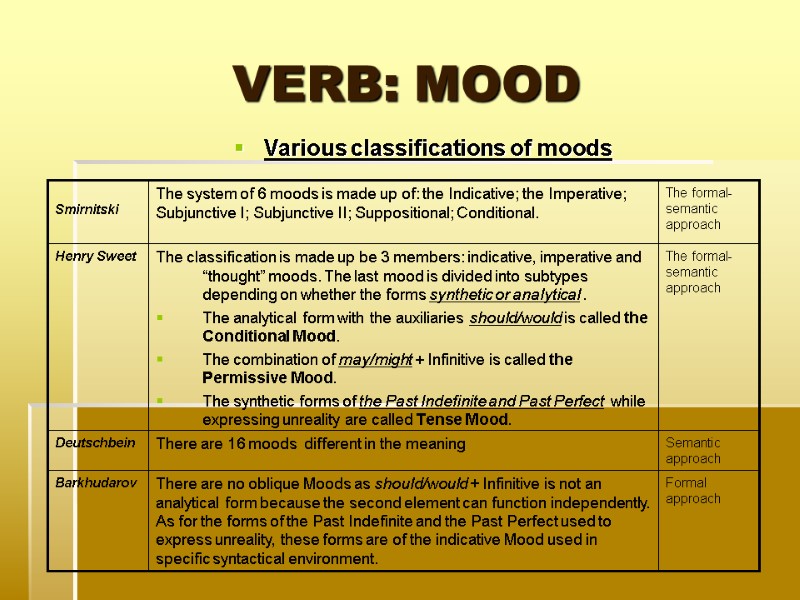
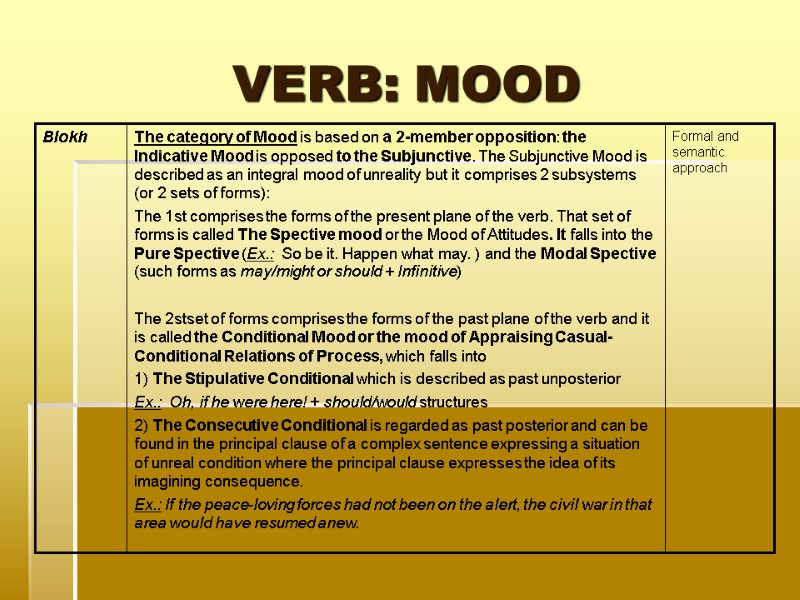
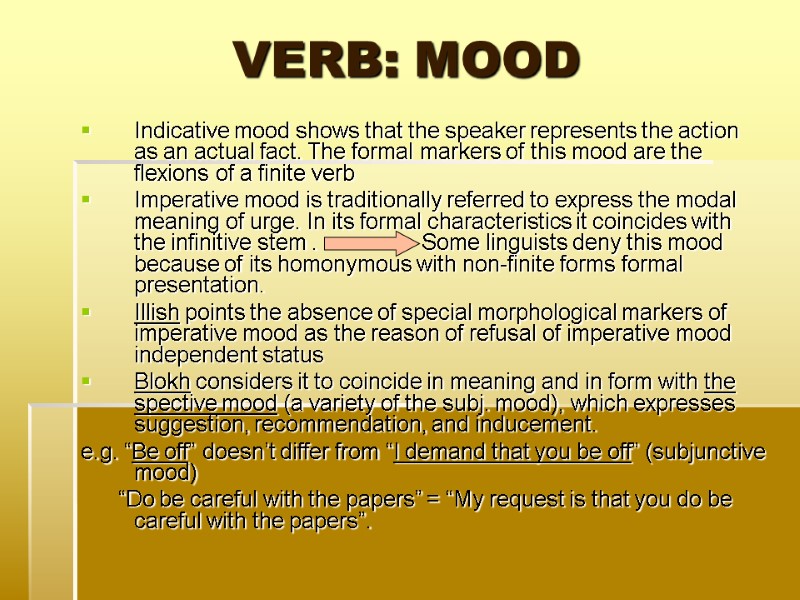
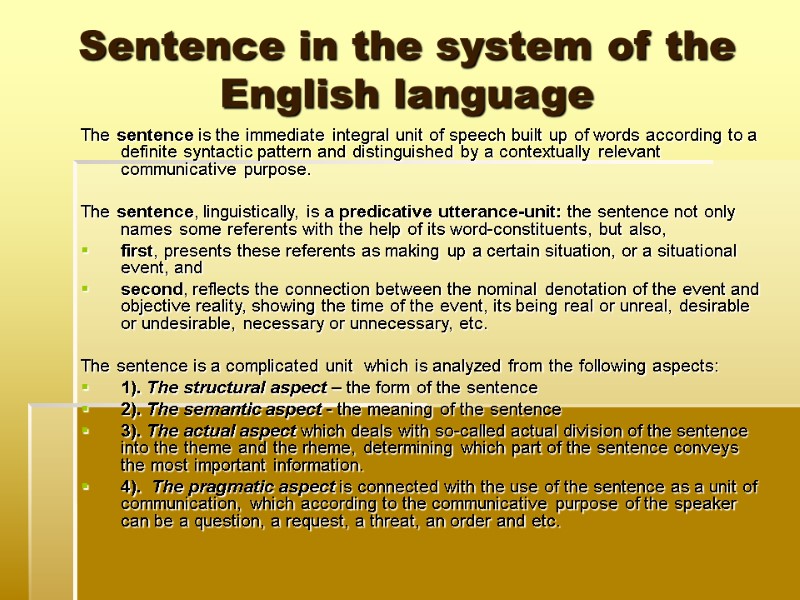
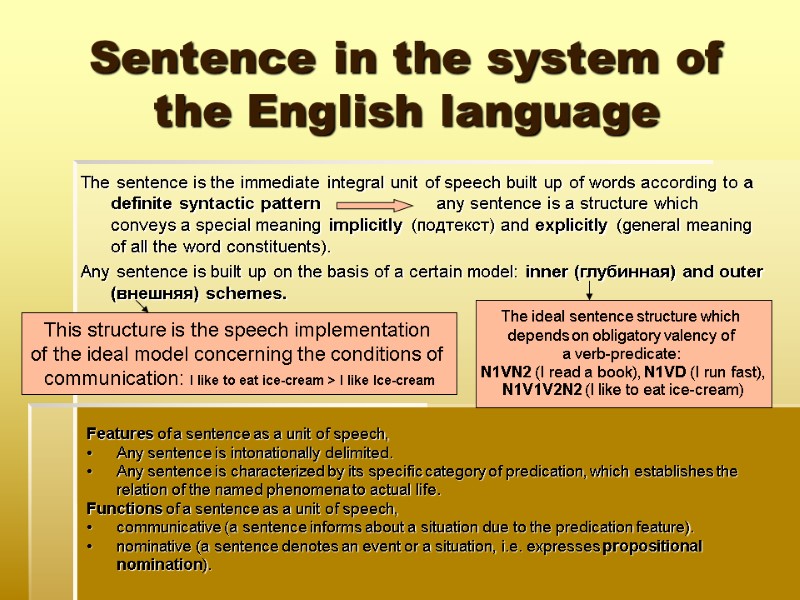
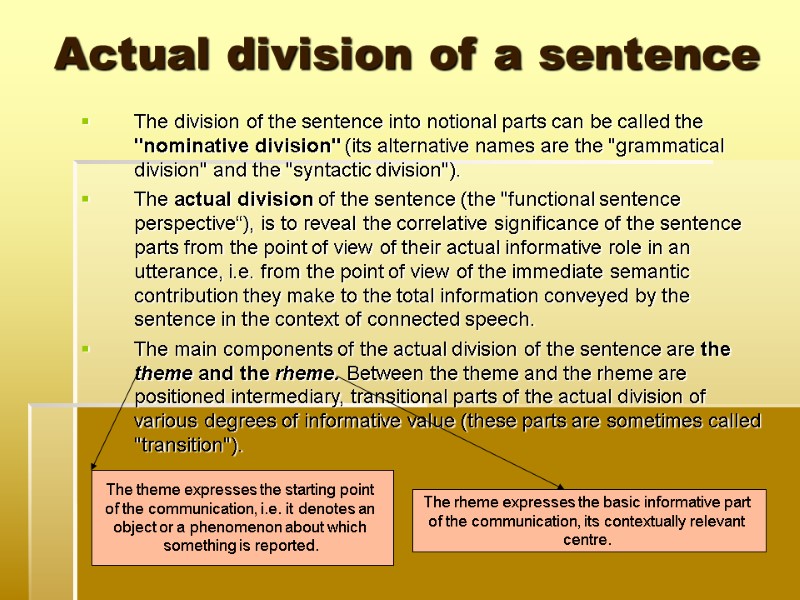
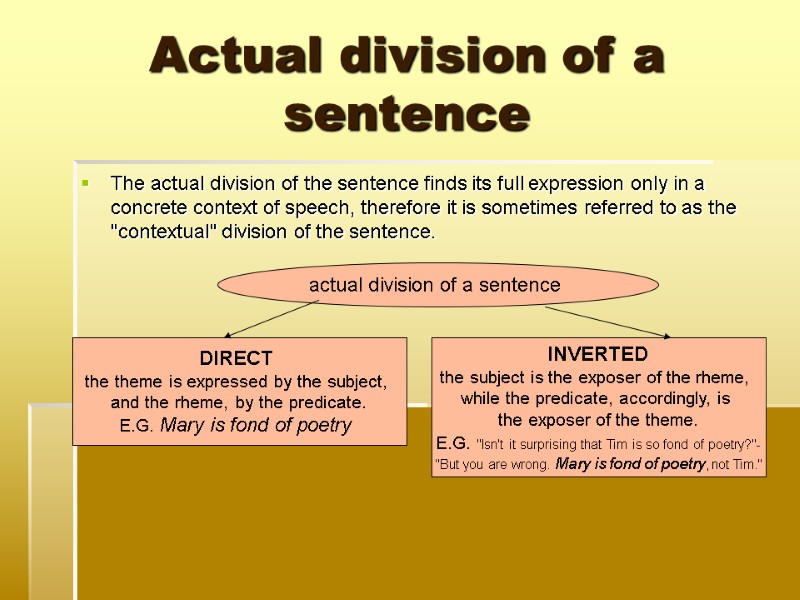
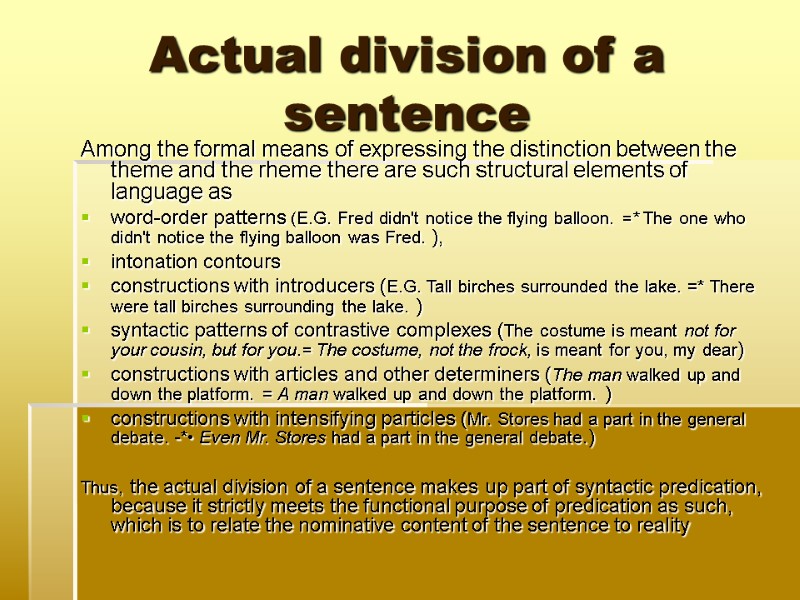
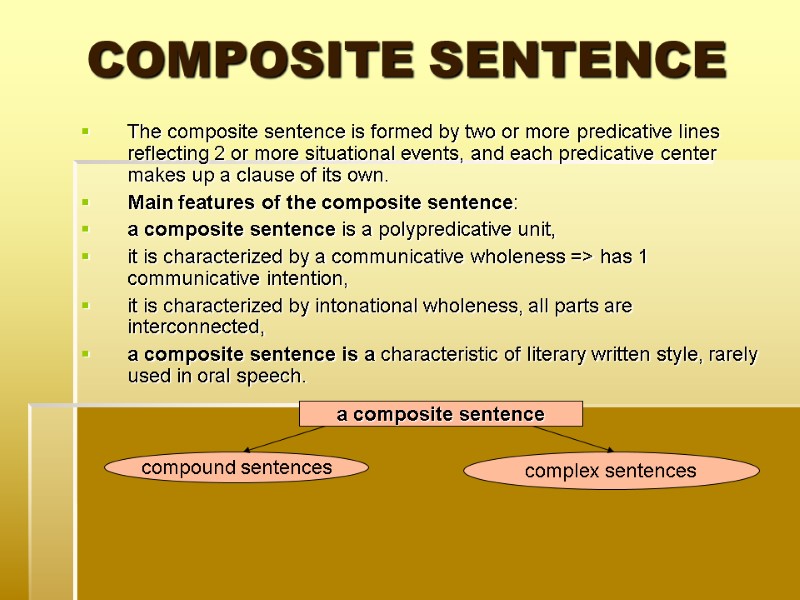
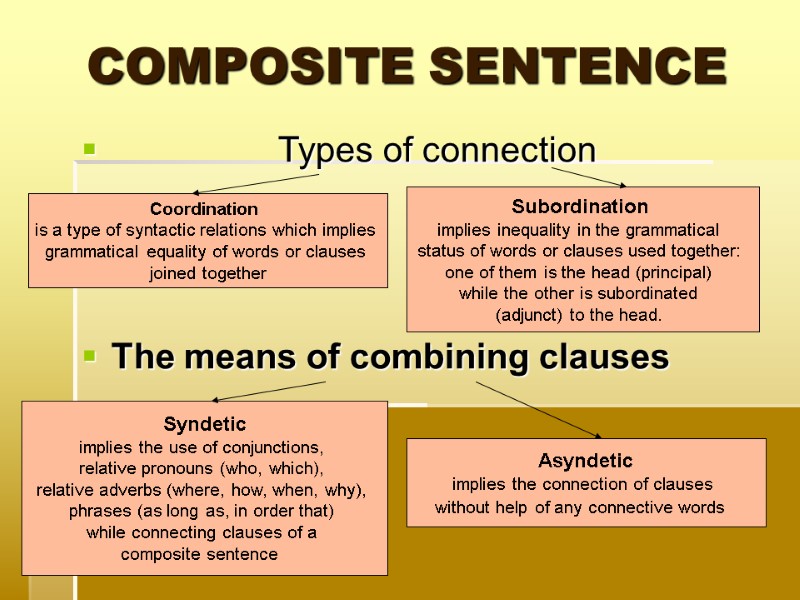
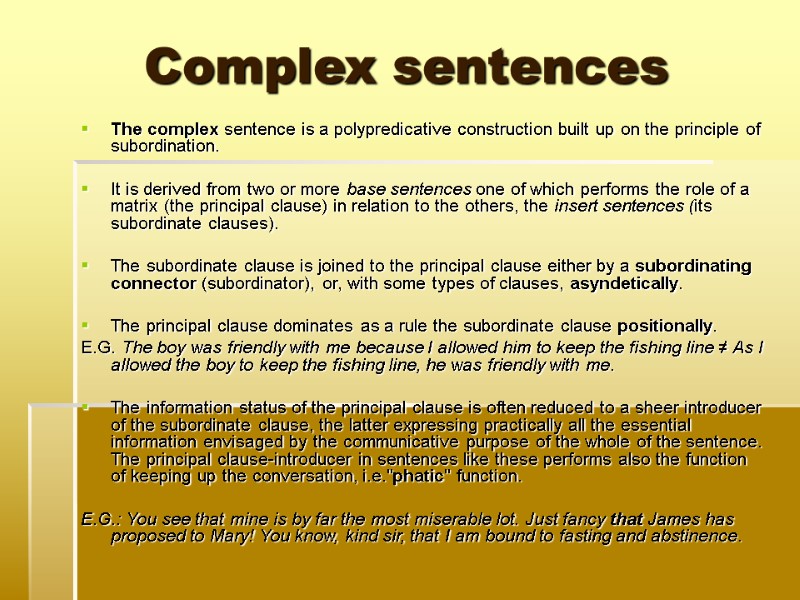


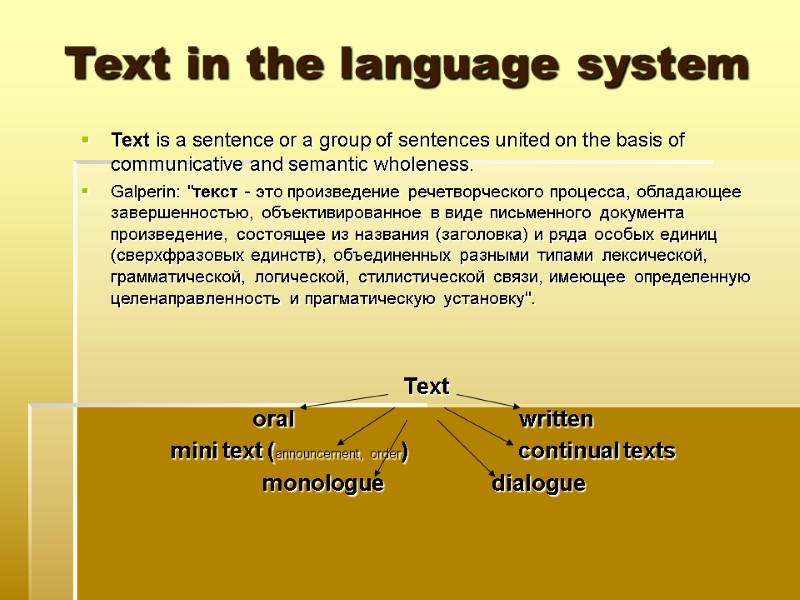
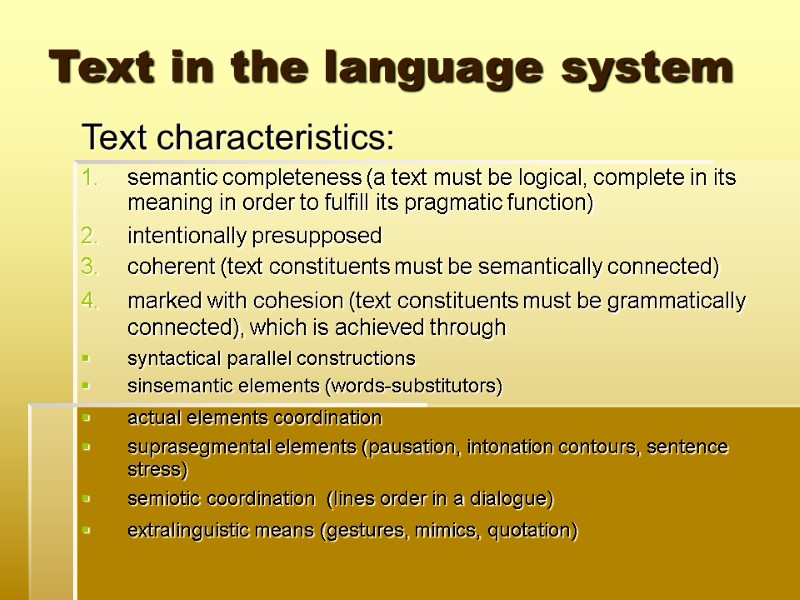
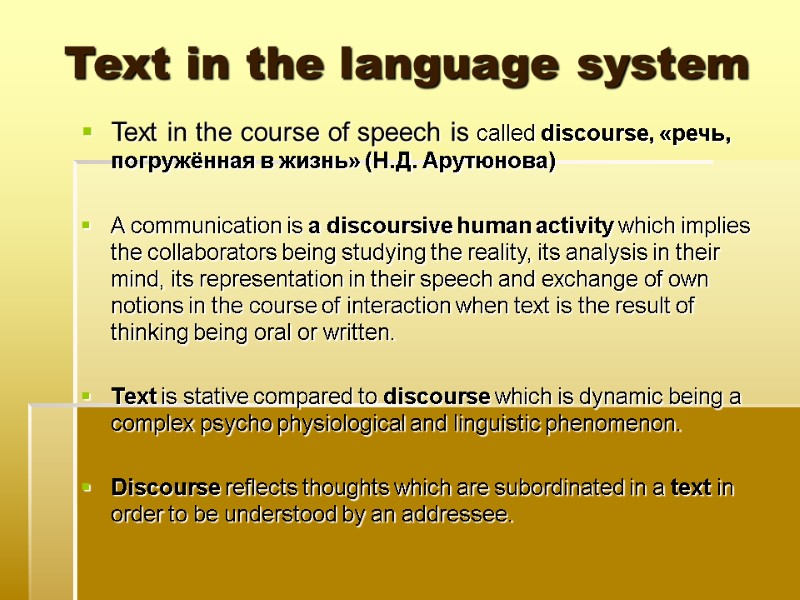
10784-theoretical_grammar_of_the_english_language.ppt
- Количество слайдов: 56
 Theoretical grammar of the English language
Theoretical grammar of the English language
 The system of language study Language is a means of forming and storing ideas as reflections of reality and exchanging them in the process of human intercourse. Language incorporates the three constituent parts: the phonological system, the lexical system, the grammatical system: the phonological system is the subfoundation of language which determines the material (phonetical) appearance of its significative units. the lexical system is the whole set of naming means of language, that is, words and stable word-groups. the grammatical system is the whole set of regularities determining the combination of naming means in the formation of utterances as the embodiment of thinking process. Any linguistic description may have a practical (providing a person with a manual of practical mastery of the corresponding part of language) or theoretical (present the studied parts of language in relative isolation, so as to gain insights into their inner structure and expose the intrinsic mechanisms of their functioning ) purpose.
The system of language study Language is a means of forming and storing ideas as reflections of reality and exchanging them in the process of human intercourse. Language incorporates the three constituent parts: the phonological system, the lexical system, the grammatical system: the phonological system is the subfoundation of language which determines the material (phonetical) appearance of its significative units. the lexical system is the whole set of naming means of language, that is, words and stable word-groups. the grammatical system is the whole set of regularities determining the combination of naming means in the formation of utterances as the embodiment of thinking process. Any linguistic description may have a practical (providing a person with a manual of practical mastery of the corresponding part of language) or theoretical (present the studied parts of language in relative isolation, so as to gain insights into their inner structure and expose the intrinsic mechanisms of their functioning ) purpose.
 Subject matter of theoretical grammar of the English language Grammar is a branch of linguistics which studies principles of word formation, of phrase and sentence construction. In earlier periods of the development of linguistic knowledge, grammatical scholars believed that the only purpose of grammar was to give strict rules of writing and speaking correctly. The result of this "prescriptive" approach was that alongside quite essential and useful information, non-existent "rules" were formulated that stood in sheer contradiction with the existing language usage, i.e. lingual reality; structural and descriptive scholars In modern trends grammar is considered as a system of interrelated elements which can be segmental and suprasegmental. Theoretical grammar is aimed at analysis of the language system in order to describe different phenomena of the language and explain their uniqueness: semantic and functional scholar. grammar Morphology studies forms of words and principles of their changing Syntax studies principles of phrase and sentence construction
Subject matter of theoretical grammar of the English language Grammar is a branch of linguistics which studies principles of word formation, of phrase and sentence construction. In earlier periods of the development of linguistic knowledge, grammatical scholars believed that the only purpose of grammar was to give strict rules of writing and speaking correctly. The result of this "prescriptive" approach was that alongside quite essential and useful information, non-existent "rules" were formulated that stood in sheer contradiction with the existing language usage, i.e. lingual reality; structural and descriptive scholars In modern trends grammar is considered as a system of interrelated elements which can be segmental and suprasegmental. Theoretical grammar is aimed at analysis of the language system in order to describe different phenomena of the language and explain their uniqueness: semantic and functional scholar. grammar Morphology studies forms of words and principles of their changing Syntax studies principles of phrase and sentence construction
 Language as a system Units of all the higher levels of language are meaningful; they are so called "signemes" as opposed to "cortemes", i.e. non-meaningful units of different status, such as phonemes (and letters as phoneme representatives), syllables, and some others. phonemic level formed by phonemes. The phoneme has no meaning, its function is purely differential morphemic level formed by morphemes which are the elementary meaningful parts of the word lexemic level formed by words (lexemes), which as different from the morpheme are directly naming (nominative) unit of language phrasemic level formed by combinations of two or more notional words which perform a nominative function representing the referent of nomination as a complicated phenomenon proposemic level formed by the sentence which, naming a certain situation, or situational event, expresses predication, i.e. shows the relation of the denoted event to reality. dictemic level formed by the dicteme being defined as an elementary topical segmental unit of the continual text
Language as a system Units of all the higher levels of language are meaningful; they are so called "signemes" as opposed to "cortemes", i.e. non-meaningful units of different status, such as phonemes (and letters as phoneme representatives), syllables, and some others. phonemic level formed by phonemes. The phoneme has no meaning, its function is purely differential morphemic level formed by morphemes which are the elementary meaningful parts of the word lexemic level formed by words (lexemes), which as different from the morpheme are directly naming (nominative) unit of language phrasemic level formed by combinations of two or more notional words which perform a nominative function representing the referent of nomination as a complicated phenomenon proposemic level formed by the sentence which, naming a certain situation, or situational event, expresses predication, i.e. shows the relation of the denoted event to reality. dictemic level formed by the dicteme being defined as an elementary topical segmental unit of the continual text
 Grammatical form and grammatical category Notional words possess some morphemic features expressing grammatical (morphological) meanings, which determine the grammatical form of the word. The grammatical form is not confined to an individual word, but unites the whole class of words, so that each word of the class expresses the corresponding grammatical meaning together with its individual, concrete semantics. Thus, the grammatical form presents a division of the words on the principle of expressing a certain grammatical meaning. The most general meanings rendered by language and expressed by systemic correlations of word-forms are interpreted in linguistics as categorial grammatical meanings. The categorial meaning unites the individual meanings of the correlated paradigmatic forms (e.g. singular - plural) and is exposed through them. Thus, the grammatical category is a system of expressing a generalized grammatical meaning by means of paradigmatic correlation of grammatical forms.
Grammatical form and grammatical category Notional words possess some morphemic features expressing grammatical (morphological) meanings, which determine the grammatical form of the word. The grammatical form is not confined to an individual word, but unites the whole class of words, so that each word of the class expresses the corresponding grammatical meaning together with its individual, concrete semantics. Thus, the grammatical form presents a division of the words on the principle of expressing a certain grammatical meaning. The most general meanings rendered by language and expressed by systemic correlations of word-forms are interpreted in linguistics as categorial grammatical meanings. The categorial meaning unites the individual meanings of the correlated paradigmatic forms (e.g. singular - plural) and is exposed through them. Thus, the grammatical category is a system of expressing a generalized grammatical meaning by means of paradigmatic correlation of grammatical forms.
 Grammatical category Professor Smirnitsky's Postulates of the Grammatical Category. I. Any grammatical category must be represented by, at least, 2 grammatical forms. E.g. Category of number in English is represented by the opposition of 2 forms II. No grammatical category can be represented by all the word forms of the word, as all the word forms of the given word make up a lexico-grammatical category. E.g. Such is the Category of Gender in Russian as it is impossible to change the noun according to the category of Gender, i.e. masculine, feminine, neuter. The set meanings of Gender are inherent in certain nouns. Some nouns belong to masculine gender, other - to feminine, and still other - neuter. III. One word form may combine different grammatical categories. E.g. : the form " speaks " combines 5 categories ( grammatical meanings ) - tense, 3rd person, singular number, indicative mood, active voice. IV. No word form can combine 2 categorial meanings (grammatical meaning of the same category) of one and the same category. Eg. It is impossible to find singular and plural in one word form simultaneously. V. Every word form must represent at least one categorial form or belong to some grammatical category. There are no notional word forms without grammatical categories.
Grammatical category Professor Smirnitsky's Postulates of the Grammatical Category. I. Any grammatical category must be represented by, at least, 2 grammatical forms. E.g. Category of number in English is represented by the opposition of 2 forms II. No grammatical category can be represented by all the word forms of the word, as all the word forms of the given word make up a lexico-grammatical category. E.g. Such is the Category of Gender in Russian as it is impossible to change the noun according to the category of Gender, i.e. masculine, feminine, neuter. The set meanings of Gender are inherent in certain nouns. Some nouns belong to masculine gender, other - to feminine, and still other - neuter. III. One word form may combine different grammatical categories. E.g. : the form " speaks " combines 5 categories ( grammatical meanings ) - tense, 3rd person, singular number, indicative mood, active voice. IV. No word form can combine 2 categorial meanings (grammatical meaning of the same category) of one and the same category. Eg. It is impossible to find singular and plural in one word form simultaneously. V. Every word form must represent at least one categorial form or belong to some grammatical category. There are no notional word forms without grammatical categories.
 Grammatical category The ordered set of grammatical forms expressing a categorial function constitutes a paradigm. The paradigmatic correlations of grammatical forms in a category are exposed by the so-called “grammatical oppositions”. The opposition may be defined as a generalized correlation of lingual forms by means of which a certain function is expressed. The correlated elements (members) of the opposition must possess two types of features: common features and differential features. By number of members contrasted, oppositions are divided into binary (two members) and more than binary (ternary, quaternary, etc.). privative opposition is formed by a contrastive pair of members in which one member is characterized by the presence of a certain differential feature ("mark"), while the other member is characterized by the absence of this feature. E.G.: girl – girls, work – is working gradual opposition is formed by a contrastive group of members which are distinguished not by the presence or absence of a feature, but by the degree of it. E.G.: nice – nicer – the nicest [i: - i - e - ae] equipollent opposition is formed by a contrastive pair or group in which the members are distinguished by different positive features. E.G.: the phonemes [m] and [b], both bilabial consonants, form an equipollent opposition, [m] being nasalized, [b] being plosive
Grammatical category The ordered set of grammatical forms expressing a categorial function constitutes a paradigm. The paradigmatic correlations of grammatical forms in a category are exposed by the so-called “grammatical oppositions”. The opposition may be defined as a generalized correlation of lingual forms by means of which a certain function is expressed. The correlated elements (members) of the opposition must possess two types of features: common features and differential features. By number of members contrasted, oppositions are divided into binary (two members) and more than binary (ternary, quaternary, etc.). privative opposition is formed by a contrastive pair of members in which one member is characterized by the presence of a certain differential feature ("mark"), while the other member is characterized by the absence of this feature. E.G.: girl – girls, work – is working gradual opposition is formed by a contrastive group of members which are distinguished not by the presence or absence of a feature, but by the degree of it. E.G.: nice – nicer – the nicest [i: - i - e - ae] equipollent opposition is formed by a contrastive pair or group in which the members are distinguished by different positive features. E.G.: the phonemes [m] and [b], both bilabial consonants, form an equipollent opposition, [m] being nasalized, [b] being plosive
 Grammatical form The grammatical form may be made up in two ways Characteristics of analytical forms The form consists of two or more words. One word of the grammatical combination carries entire grammatical meaning, the other – pure lexical meaning. The analytical form exists in the word paradigm alongside with the synthetical one. The analytical form is a grammatical entity which can not be divided into separate meaningful components The analytical form is not a syntactical entity as it does not nominate a complex phenomenon or situation. synthetical Synthetical grammatical forms are realized by the inner morphemic composition of the word. These forms are referred to as inner-inflexional (made by means of phoneme interchange: e.g. keep – kept, man - men), outer-inflexional (made by means of adding of different affixes: e.g. girl – girls, work – is working), suppletive (made by means of grammatical interchange of word roots : e.g. good – better, go – went, I - me) analytical analytical grammatical forms are built up by a combination of at least two words, one of which is a grammatical auxiliary (word-morpheme), and the other, a word of "substantial" meaning.
Grammatical form The grammatical form may be made up in two ways Characteristics of analytical forms The form consists of two or more words. One word of the grammatical combination carries entire grammatical meaning, the other – pure lexical meaning. The analytical form exists in the word paradigm alongside with the synthetical one. The analytical form is a grammatical entity which can not be divided into separate meaningful components The analytical form is not a syntactical entity as it does not nominate a complex phenomenon or situation. synthetical Synthetical grammatical forms are realized by the inner morphemic composition of the word. These forms are referred to as inner-inflexional (made by means of phoneme interchange: e.g. keep – kept, man - men), outer-inflexional (made by means of adding of different affixes: e.g. girl – girls, work – is working), suppletive (made by means of grammatical interchange of word roots : e.g. good – better, go – went, I - me) analytical analytical grammatical forms are built up by a combination of at least two words, one of which is a grammatical auxiliary (word-morpheme), and the other, a word of "substantial" meaning.
 Morphemic structure of a word morpheme is the elementary meaningful part of the word. There are the following distributional morpheme types which classification is arranged in the form of oppositional pairs of immediate correlation. on the basis of the degree of self-dependence on the basis of formal presentation on the basis of segmental relation on the basis of grammatical alternation on the basis of linear characteristic on the basis of meaningfulness morpheme free (blamed, beautifully) bound (blamed, beautifully) overt (clock + s) covert (clock + zero morpheme of singular number) segmental (root and affixes) supra-segmental (intonation contours, accents, pauses ) additive (outer grammatical suffixes ) replacive (the root phonemes of grammatical interchange: dr-i-ve - dr-o-ve - dr-i-ven ) continuous (is working, has driven) discontinuous (work, drives) meaningful (root and affixes) empty (connecting morphemes: child-r-en)
Morphemic structure of a word morpheme is the elementary meaningful part of the word. There are the following distributional morpheme types which classification is arranged in the form of oppositional pairs of immediate correlation. on the basis of the degree of self-dependence on the basis of formal presentation on the basis of segmental relation on the basis of grammatical alternation on the basis of linear characteristic on the basis of meaningfulness morpheme free (blamed, beautifully) bound (blamed, beautifully) overt (clock + s) covert (clock + zero morpheme of singular number) segmental (root and affixes) supra-segmental (intonation contours, accents, pauses ) additive (outer grammatical suffixes ) replacive (the root phonemes of grammatical interchange: dr-i-ve - dr-o-ve - dr-i-ven ) continuous (is working, has driven) discontinuous (work, drives) meaningful (root and affixes) empty (connecting morphemes: child-r-en)
 Parts of speech theory The words of language depending on various formal and semantic features, are divided into grammatically relevant sets or classes. The traditional grammatical classes of words, are called "parts of speech” In early scholars mono-differential approach was used to distinguish parts of speech when one of the following three criteria was applied: "semantic", "formal", and "functional". presupposes the evaluation of the generalized meaning which is characteristic of all the subsets of words constituting a given part of speech provides the exposition of the specific flexional and derivational (word-building) features concerns the syntactic role of words in the sentence typical of a part of speech
Parts of speech theory The words of language depending on various formal and semantic features, are divided into grammatically relevant sets or classes. The traditional grammatical classes of words, are called "parts of speech” In early scholars mono-differential approach was used to distinguish parts of speech when one of the following three criteria was applied: "semantic", "formal", and "functional". presupposes the evaluation of the generalized meaning which is characteristic of all the subsets of words constituting a given part of speech provides the exposition of the specific flexional and derivational (word-building) features concerns the syntactic role of words in the sentence typical of a part of speech
 Historical review of parts of speech theories
Historical review of parts of speech theories
 Historical review of parts of speech theories
Historical review of parts of speech theories
 Historical review of parts of speech theories Declinable: noun words – noun, numeral, pronoun 2. adjective words – adjective, adjectival numeral, participle 3. verbs Indeclinable: 1. interjection, 2. adverb, 3. preposition 4. conjunction.
Historical review of parts of speech theories Declinable: noun words – noun, numeral, pronoun 2. adjective words – adjective, adjectival numeral, participle 3. verbs Indeclinable: 1. interjection, 2. adverb, 3. preposition 4. conjunction.
 Historical review of parts of speech theories
Historical review of parts of speech theories
 Parts of speech in contemporary English Notional parts of speech the noun the categorial meaning of substance the forms of number and case; the specific suffixal forms of derivation the substantive functions in the sentence; prepositional connections, modification by an adj. the adjective the categorial meaning of property the forms of degrees of comparison, the specific suffixal forms of derivation adjectival functions in the sentence the numeral the categorial meaning of number (cardinal and ordinal) the narrow set of simple numerals; the specific forms of composition for compound; the specific suffixal forms of derivation for ordinal the functions of numerical attribute and numerical substantive the pronoun the categorial meaning of indication (deixis) the narrow sets of various status with the corresponding formal properties of categorial changeability and word-building the substantival and adjectival functions for different sets the verb the categorial meaning of process the forms of the verbal categories of person, number, tense, aspect, voice, mood; the opposition of the finite and non-finite forms the function of the finite predicate for the finite verb; the mixed verbal - other than verbal functions for the non-finite verb the adverb the calegorial meaning of the secondary property the forms of the degrees of comparison for qualitative adverbs; the specific suffixal forms of derivation the functions of various adverbial modifiers Functional parts of speech the article expresses the specific limitation of the substantive functions the preposition expresses the dependencies and interdependencies of substantive referents the conjunction expresses connections of phenomena the particle unites the functional words of specifying and limiting meaning. the modal word expresses the attitude of the speaker to the reflected situation and its parts. Here belong the functional words of probability (probably, perhaps, etc.), of qualitative evaluation (fortunately, unfortunately, luckily, etc.), and also of affirmation and negation the interjection is a signal of emotions
Parts of speech in contemporary English Notional parts of speech the noun the categorial meaning of substance the forms of number and case; the specific suffixal forms of derivation the substantive functions in the sentence; prepositional connections, modification by an adj. the adjective the categorial meaning of property the forms of degrees of comparison, the specific suffixal forms of derivation adjectival functions in the sentence the numeral the categorial meaning of number (cardinal and ordinal) the narrow set of simple numerals; the specific forms of composition for compound; the specific suffixal forms of derivation for ordinal the functions of numerical attribute and numerical substantive the pronoun the categorial meaning of indication (deixis) the narrow sets of various status with the corresponding formal properties of categorial changeability and word-building the substantival and adjectival functions for different sets the verb the categorial meaning of process the forms of the verbal categories of person, number, tense, aspect, voice, mood; the opposition of the finite and non-finite forms the function of the finite predicate for the finite verb; the mixed verbal - other than verbal functions for the non-finite verb the adverb the calegorial meaning of the secondary property the forms of the degrees of comparison for qualitative adverbs; the specific suffixal forms of derivation the functions of various adverbial modifiers Functional parts of speech the article expresses the specific limitation of the substantive functions the preposition expresses the dependencies and interdependencies of substantive referents the conjunction expresses connections of phenomena the particle unites the functional words of specifying and limiting meaning. the modal word expresses the attitude of the speaker to the reflected situation and its parts. Here belong the functional words of probability (probably, perhaps, etc.), of qualitative evaluation (fortunately, unfortunately, luckily, etc.), and also of affirmation and negation the interjection is a signal of emotions
 Noun in the system of the English language The noun as a part of speech has the categorial meaning of SUBSTANCE (THINGNESS). The most characteristic substantive function of the noun is that of the subject in the sentence. The function of the object in the sentence is also typical of the noun as the substance word. Other syntactic functions, i.e. attributive, adverbial, and even predicative, although performed by the noun with equal ease, are not immediately characteristic of its substantive quality as such. The noun is characterized by some special types of combinability: typical of the noun is the prepositional combinability with another noun, a verb, an adjective, an adverb. E.g.: an entrance to the house; to turn round the corner; red in the face; far from its destination. The casal (possessive) combinability characterizes the noun alongside its prepositional combinability with another noun. E.g.: the speech of the President - the President's speech; the cover of the book - the book's cover. The class of nouns falls into four subclasses: proper and common nouns animate and inanimate nouns human and non-human nouns countable and uncountable nouns concrete and abstract English noun can be declined within two categories: category of number and category of determinacy.
Noun in the system of the English language The noun as a part of speech has the categorial meaning of SUBSTANCE (THINGNESS). The most characteristic substantive function of the noun is that of the subject in the sentence. The function of the object in the sentence is also typical of the noun as the substance word. Other syntactic functions, i.e. attributive, adverbial, and even predicative, although performed by the noun with equal ease, are not immediately characteristic of its substantive quality as such. The noun is characterized by some special types of combinability: typical of the noun is the prepositional combinability with another noun, a verb, an adjective, an adverb. E.g.: an entrance to the house; to turn round the corner; red in the face; far from its destination. The casal (possessive) combinability characterizes the noun alongside its prepositional combinability with another noun. E.g.: the speech of the President - the President's speech; the cover of the book - the book's cover. The class of nouns falls into four subclasses: proper and common nouns animate and inanimate nouns human and non-human nouns countable and uncountable nouns concrete and abstract English noun can be declined within two categories: category of number and category of determinacy.
 Category of number of English nouns The category of number is expressed by the opposition of the plural form of the noun to its singular form. The strong member of this binary opposition is the plural, its productive formal mark being the suffix –(e)s. Non-productive ways of expressing the number opposition are vowel interchange (man – men, woman – women, tooth – teeth), the archaic suffix –(e)n (ox – oxen, child – children, cow – kine, brother – brethren), the correlation of individual singular and plural suffixes in a limited number of borrowed nouns (formula – formulae, phenomenon – phenomena, alumnus – alumni etc). In some cases the plural form is homonymous with the singular form (sheep, deer, fish ). The most general quantitative characteristics of individual words constitute the lexico-grammatical base for dividing the nounal vocabulary as a whole into countable nouns and uncountable nouns, which are treated grammatically as either singular or plural. The two subclasses of uncountable nouns are usually referred to, respectively, as sungularia tantum / pluralia tantum. The absolute singular is characteristic of the names of: abstract notions (peace, love, joy …) branches of professional activity (chemistry, architecture, linguistics…) mass materials (water, snow, steel…) collective inanimate objects (foliage, fruit, furniture…) The absolute plural is characteristic of the uncountable nouns: which denote objects consisting of two halves (trousers, scossors,spectacles…) expressing some sort of collective meaning, i.e. rendering the idea of indefinite plurality, both concrete and abstract (supplies, outskirts, clothes; tidings, earnings, contents, politics; police, cattle, poultry …) denoting some diseases as well as some abnormal states of the body and mind (measles, rickets, creeps, hysterics…) The absolute plural, by way of oppositional reduction, can be represented in countable nouns having the form of the singular (this form of the absolute plural may be called multitude plural), in uncountable nouns having the form of the plural (descriptive uncountable plural), and also in countable nouns having the form of the singular (repetition plural).
Category of number of English nouns The category of number is expressed by the opposition of the plural form of the noun to its singular form. The strong member of this binary opposition is the plural, its productive formal mark being the suffix –(e)s. Non-productive ways of expressing the number opposition are vowel interchange (man – men, woman – women, tooth – teeth), the archaic suffix –(e)n (ox – oxen, child – children, cow – kine, brother – brethren), the correlation of individual singular and plural suffixes in a limited number of borrowed nouns (formula – formulae, phenomenon – phenomena, alumnus – alumni etc). In some cases the plural form is homonymous with the singular form (sheep, deer, fish ). The most general quantitative characteristics of individual words constitute the lexico-grammatical base for dividing the nounal vocabulary as a whole into countable nouns and uncountable nouns, which are treated grammatically as either singular or plural. The two subclasses of uncountable nouns are usually referred to, respectively, as sungularia tantum / pluralia tantum. The absolute singular is characteristic of the names of: abstract notions (peace, love, joy …) branches of professional activity (chemistry, architecture, linguistics…) mass materials (water, snow, steel…) collective inanimate objects (foliage, fruit, furniture…) The absolute plural is characteristic of the uncountable nouns: which denote objects consisting of two halves (trousers, scossors,spectacles…) expressing some sort of collective meaning, i.e. rendering the idea of indefinite plurality, both concrete and abstract (supplies, outskirts, clothes; tidings, earnings, contents, politics; police, cattle, poultry …) denoting some diseases as well as some abnormal states of the body and mind (measles, rickets, creeps, hysterics…) The absolute plural, by way of oppositional reduction, can be represented in countable nouns having the form of the singular (this form of the absolute plural may be called multitude plural), in uncountable nouns having the form of the plural (descriptive uncountable plural), and also in countable nouns having the form of the singular (repetition plural).
 Category of gender of English nouns The gender subcategorization of English nouns is purely lexical or "semantic“ but not grammatical. The gender division of nouns in English is expressed not as variable forms of words, but as nounal classification. According to some theories, the category of gender is expressed in English by the obligatory correlation of nouns with the personal pronouns of the third person. As a result of the double oppositional correlation, a specific system of three genders arises, which is, somewhat misleadingly represented by the traditional terminology: the neuter gender, the masculine gender, the feminine gender. English nouns can show the sex of their referents lexically, either by means of being combined with certain notional words used as sex indicators, or else by suffixal derivation. E.G..: boy-friend - girl-friend; man-producer - woman-producer; washer-man - washer-woman; landlord - landlady; bull-calf - cow-calf; cock-sparrow - hen-sparrow; he-bear - she-bear; master - mistress; actor - actress; executor - executrix; lion - lioness; sultan – sultana; etc noun person non-person feminine masculine neuter common gender
Category of gender of English nouns The gender subcategorization of English nouns is purely lexical or "semantic“ but not grammatical. The gender division of nouns in English is expressed not as variable forms of words, but as nounal classification. According to some theories, the category of gender is expressed in English by the obligatory correlation of nouns with the personal pronouns of the third person. As a result of the double oppositional correlation, a specific system of three genders arises, which is, somewhat misleadingly represented by the traditional terminology: the neuter gender, the masculine gender, the feminine gender. English nouns can show the sex of their referents lexically, either by means of being combined with certain notional words used as sex indicators, or else by suffixal derivation. E.G..: boy-friend - girl-friend; man-producer - woman-producer; washer-man - washer-woman; landlord - landlady; bull-calf - cow-calf; cock-sparrow - hen-sparrow; he-bear - she-bear; master - mistress; actor - actress; executor - executrix; lion - lioness; sultan – sultana; etc noun person non-person feminine masculine neuter common gender
 Category of case of English nouns Case is the immanent morphological category of the noun manifested in the forms of noun declension and showing the relations of the nounal referent to other objects and phenomena. There are different points of view about the essence of the category of case 1. “Theory of prepositional cases” - combinations of nouns with prepositions in certain object and attributive collocations should be understood as morphological case forms. To these belong first of all the "dative" case (to + Noun, for + Noun) and the "genitive" case (of + Noun). 2. “Limited case theory“ (H. Sweet, O. Jespersen ) - this category is expressed in English by the opposition of the form (noun +-'s [-z, -s, -iz]), usually called the "possessive" case, to the unfeatured form of the noun, usually called the "common" case. But the common form is absolutely indefinite from the semantic point of view, whereas the genitive form is restricted to the functions and usage (it is impossible to form genitive in non-person nouns but it may be applied to the noun group: Mary and Fred’s room). historically the genitive case appeared as a mistake of a monk who clipped the personal pronoun because of loss of aspiration of the glottal sound [h]: Aelfred his sons < Aelfred’s sons. In a hundred years plural genitive was invented and fixed in the grammar.
Category of case of English nouns Case is the immanent morphological category of the noun manifested in the forms of noun declension and showing the relations of the nounal referent to other objects and phenomena. There are different points of view about the essence of the category of case 1. “Theory of prepositional cases” - combinations of nouns with prepositions in certain object and attributive collocations should be understood as morphological case forms. To these belong first of all the "dative" case (to + Noun, for + Noun) and the "genitive" case (of + Noun). 2. “Limited case theory“ (H. Sweet, O. Jespersen ) - this category is expressed in English by the opposition of the form (noun +-'s [-z, -s, -iz]), usually called the "possessive" case, to the unfeatured form of the noun, usually called the "common" case. But the common form is absolutely indefinite from the semantic point of view, whereas the genitive form is restricted to the functions and usage (it is impossible to form genitive in non-person nouns but it may be applied to the noun group: Mary and Fred’s room). historically the genitive case appeared as a mistake of a monk who clipped the personal pronoun because of loss of aspiration of the glottal sound [h]: Aelfred his sons < Aelfred’s sons. In a hundred years plural genitive was invented and fixed in the grammar.
 Category of determination of English nouns Article is a determining unit of specific nature accompanying the noun in communicative collocation. The definite article expresses the identification or individualsation of the noun: the use of this article shows that the object denoted is taken in its concrete, individual quality. The meaningful absence of the article before the countable noun in the singular signifies that the noun is taken in an abstract sense, expressing the most general idea of the object denoted. This meaning, which may be called the meaning of "absolute generalization". As a result of this observation, two separate subsets can be defined, one of which is centered around the definite article with its individualizing semantics (this - these, that - those, my, our, your, his, her, its, their), and the other one around the indefinite article with its generalizing semantics (another, some, any, every, no). Thus, the status of the combination of the article with the noun should be determined as basically analytical, the article construction as such being localized by its segmental properties between the free syntactic combination of words (the upper bordering level) and the combination of a grammatical affix with a notional stem in the morphological composition of an indivisible word (the lower bordering level). The article itself is a special type of grammatical auxiliary.
Category of determination of English nouns Article is a determining unit of specific nature accompanying the noun in communicative collocation. The definite article expresses the identification or individualsation of the noun: the use of this article shows that the object denoted is taken in its concrete, individual quality. The meaningful absence of the article before the countable noun in the singular signifies that the noun is taken in an abstract sense, expressing the most general idea of the object denoted. This meaning, which may be called the meaning of "absolute generalization". As a result of this observation, two separate subsets can be defined, one of which is centered around the definite article with its individualizing semantics (this - these, that - those, my, our, your, his, her, its, their), and the other one around the indefinite article with its generalizing semantics (another, some, any, every, no). Thus, the status of the combination of the article with the noun should be determined as basically analytical, the article construction as such being localized by its segmental properties between the free syntactic combination of words (the upper bordering level) and the combination of a grammatical affix with a notional stem in the morphological composition of an indivisible word (the lower bordering level). The article itself is a special type of grammatical auxiliary.
 Verb in the system of the English language The general categorial meaning of the verb is process presented dynamically, i.e. developing in time. This general processual meaning is embedded in the semantics of all the verbs, including those that denote states, forms of existence, types of attitude, evaluations, etc., rather than actions. The processual categorial meaning of the notional verb determines its characteristic combination with a noun expressing both the doer of the action (its subject) and, in cases of the objective verb, the recipient of the action (its object); it also determines its combination with an adverb as the modifier of the action. In the sentence the finite verb invariably performs the function of the verb-predicate, expressing the processual categorial features of predication, i.e. time, aspect, voice, and mood. The non-finite verb performs different functions according to its intermediary nature (those of the syntactic subject, object, adverbial modifier, attribute), but its non-processual functions are always actualized in close combination with its processual semantic features. Verbs are characterized by specific forms of word-building, as well as by the formal features expressing the corresponding grammatical categories. The verb stems may be simple (e.g.: go, take, read ), sound-replacive (e.g.: food - to feed, blood - to bleed;), stress-replacive (e.g.: 'import - to im'port, 'transport - to trans'port ), expanded (e.g.: -ate (cultivate), -en (broaden), re- (remake), under- (undergo)), composite (e.g.: blackmail п. ~ blackmail v. ), and phrasal (e.g.: to have a smoke - to smoke; to give a smile - to smile; to take a stroll - to stroll, go on, give in ).
Verb in the system of the English language The general categorial meaning of the verb is process presented dynamically, i.e. developing in time. This general processual meaning is embedded in the semantics of all the verbs, including those that denote states, forms of existence, types of attitude, evaluations, etc., rather than actions. The processual categorial meaning of the notional verb determines its characteristic combination with a noun expressing both the doer of the action (its subject) and, in cases of the objective verb, the recipient of the action (its object); it also determines its combination with an adverb as the modifier of the action. In the sentence the finite verb invariably performs the function of the verb-predicate, expressing the processual categorial features of predication, i.e. time, aspect, voice, and mood. The non-finite verb performs different functions according to its intermediary nature (those of the syntactic subject, object, adverbial modifier, attribute), but its non-processual functions are always actualized in close combination with its processual semantic features. Verbs are characterized by specific forms of word-building, as well as by the formal features expressing the corresponding grammatical categories. The verb stems may be simple (e.g.: go, take, read ), sound-replacive (e.g.: food - to feed, blood - to bleed;), stress-replacive (e.g.: 'import - to im'port, 'transport - to trans'port ), expanded (e.g.: -ate (cultivate), -en (broaden), re- (remake), under- (undergo)), composite (e.g.: blackmail п. ~ blackmail v. ), and phrasal (e.g.: to have a smoke - to smoke; to give a smile - to smile; to take a stroll - to stroll, go on, give in ).
 Verb in the system of the English language The combining power of verbs in relation to other words in syntactically subordinate positions is called their syntactic "valency“ which falls into two cardinal types: obligatory ( itmust necessarily be realized for the sake of the grammatical completion of the syntactic construction (e.g.: to see, to notice etc.)) and optional (it is not necessarily realized in grammatically complete constructions as it is realized depending on the concrete information to be conveyed by the utterance (e.g.: verb + adverb, to write…/to write smth to smb). verbs finite semi-notional These "predicators" include auxiliary verbs, modal verbs, semi-notional verbid introducer verbs, and link-verbs. verbids actional The verbs express the action performed by the subject statal These verbs denote the state of their subject
Verb in the system of the English language The combining power of verbs in relation to other words in syntactically subordinate positions is called their syntactic "valency“ which falls into two cardinal types: obligatory ( itmust necessarily be realized for the sake of the grammatical completion of the syntactic construction (e.g.: to see, to notice etc.)) and optional (it is not necessarily realized in grammatically complete constructions as it is realized depending on the concrete information to be conveyed by the utterance (e.g.: verb + adverb, to write…/to write smth to smb). verbs finite semi-notional These "predicators" include auxiliary verbs, modal verbs, semi-notional verbid introducer verbs, and link-verbs. verbids actional The verbs express the action performed by the subject statal These verbs denote the state of their subject
 Verb in the system of the English language verbs transitive, or сomplementive Intransitive, or uncomplementive The personal verbs normally refer to the real subject of the denoted process (which subject may be either an actual human being, or a non-human being, or else an inanimate substance or an abstract notion). Here are some of them: work, start, pause, hesitate, act, function, materialize, laugh, cough, etc. The impersonal verbs mostly express natural phenomena of the self-processual type, i.e. natural processes going on without a reference to a real subject. Cf.: rain, snow, freeze, drizzle, thaw, etc. The predicative verbs are mainly link-verbs, which can be divided into the pure link be; the specifying links become, grow, seem, appear, look, taste, etc.; and the notional links. The objective complementive verbs are divided into several important subclasses: mono-complementive verbs (taking one object-complement: e.g. take, grasp, forget, enjoy, like, look at, point to) and bicomplementive verbs (taking two complements: e.g. a) give, bring, pay, hand, show, introduce, mention). Adverbial complementive verbs include two main subclasses: the first is formed by verbs taking an adverbial complement of place or of time (e.g. be, live, stay, go, ride, arrive) and the second is formed by verbs taking an adverbial complement of manner (e.g. act, do, keep, behave, get on).
Verb in the system of the English language verbs transitive, or сomplementive Intransitive, or uncomplementive The personal verbs normally refer to the real subject of the denoted process (which subject may be either an actual human being, or a non-human being, or else an inanimate substance or an abstract notion). Here are some of them: work, start, pause, hesitate, act, function, materialize, laugh, cough, etc. The impersonal verbs mostly express natural phenomena of the self-processual type, i.e. natural processes going on without a reference to a real subject. Cf.: rain, snow, freeze, drizzle, thaw, etc. The predicative verbs are mainly link-verbs, which can be divided into the pure link be; the specifying links become, grow, seem, appear, look, taste, etc.; and the notional links. The objective complementive verbs are divided into several important subclasses: mono-complementive verbs (taking one object-complement: e.g. take, grasp, forget, enjoy, like, look at, point to) and bicomplementive verbs (taking two complements: e.g. a) give, bring, pay, hand, show, introduce, mention). Adverbial complementive verbs include two main subclasses: the first is formed by verbs taking an adverbial complement of place or of time (e.g. be, live, stay, go, ride, arrive) and the second is formed by verbs taking an adverbial complement of manner (e.g. act, do, keep, behave, get on).
 VERB: PERSON The expression of the category of person is essentially confined to the singular form of the verb in the present tense of the indicative mood and, besides, is very singularly presented in the future tense. As for the past tense, the person is alien to it, except for a trace of personal distinction in the archaic conjugation. In the present tense the expression of the category of person is divided into three peculiar subsystems. the first subsystem includes the modal verbs that have no personal inflexions: can, may, must, shall, will, ought, need, dare. the second subsystem is made up by the unique verbal lexeme be. the third subsystem presents just the regular, normal expression of person with the remaining multitude of the English verbs, with each morphemic variety of them. From the formal point of view, this subsystem occupies the medial position between the first two: if the verb be is at least two-personal, the normal personal type of the verb conjugation is one-personal. Indeed, the personal mark is confined here to the third person singular -{e)s [-z, -s, -iz], the other two persons (the first and the second) remaining unmarked, e.g. comes - come, blows - blow, stops - stop, chooses - choose.
VERB: PERSON The expression of the category of person is essentially confined to the singular form of the verb in the present tense of the indicative mood and, besides, is very singularly presented in the future tense. As for the past tense, the person is alien to it, except for a trace of personal distinction in the archaic conjugation. In the present tense the expression of the category of person is divided into three peculiar subsystems. the first subsystem includes the modal verbs that have no personal inflexions: can, may, must, shall, will, ought, need, dare. the second subsystem is made up by the unique verbal lexeme be. the third subsystem presents just the regular, normal expression of person with the remaining multitude of the English verbs, with each morphemic variety of them. From the formal point of view, this subsystem occupies the medial position between the first two: if the verb be is at least two-personal, the normal personal type of the verb conjugation is one-personal. Indeed, the personal mark is confined here to the third person singular -{e)s [-z, -s, -iz], the other two persons (the first and the second) remaining unmarked, e.g. comes - come, blows - blow, stops - stop, chooses - choose.
 VERB: PERSON The category of person taken as a whole is inherently linguistic, the significative purpose of it being confined to indications centering around the production of speech. The semantic content of the first person is the indication of the person who is speaking. This self-indicative role is performed lexically by the personal pronoun. The semantic content of the second person is the indication of the individual who is listening to the first person speaking. This listener-indicative function is performed by the personal pronoun you. The semantic content of the third person is quite different from that of either the first or second person: the third person indicates all the other entities of reality. This kind of indication may be effected in the two alternative ways. The direct way – by using words of a full-meaning function, either proper, or common, with the corresponding specifications achieved with the help of indicators-determiners (articles and pronominal words of diverse linguistic standings) The oblique way – by using the personal pronouns he, she, or it, depending on the gender properties of the referents.
VERB: PERSON The category of person taken as a whole is inherently linguistic, the significative purpose of it being confined to indications centering around the production of speech. The semantic content of the first person is the indication of the person who is speaking. This self-indicative role is performed lexically by the personal pronoun. The semantic content of the second person is the indication of the individual who is listening to the first person speaking. This listener-indicative function is performed by the personal pronoun you. The semantic content of the third person is quite different from that of either the first or second person: the third person indicates all the other entities of reality. This kind of indication may be effected in the two alternative ways. The direct way – by using words of a full-meaning function, either proper, or common, with the corresponding specifications achieved with the help of indicators-determiners (articles and pronominal words of diverse linguistic standings) The oblique way – by using the personal pronouns he, she, or it, depending on the gender properties of the referents.
 VERB: NUMBER The more or less distinct morphemic featuring of the category of number can be seen only with the archaic forms of the unique be, both in the present tense and in the past tense. As for the rest of the verbs, the blending of the morphemic expression of the two categories (number and person) is complete, for the only explicit morphemic opposition in the integral categorial sphere of person and number is reduced with these verbs to the third person singular (present tense, indicative mood).
VERB: NUMBER The more or less distinct morphemic featuring of the category of number can be seen only with the archaic forms of the unique be, both in the present tense and in the past tense. As for the rest of the verbs, the blending of the morphemic expression of the two categories (number and person) is complete, for the only explicit morphemic opposition in the integral categorial sphere of person and number is reduced with these verbs to the third person singular (present tense, indicative mood).
 VERB: tense The expression or non-expression of grammatical time, together with the expression or non-expression of grammatical mood in person-form presentation, constitutes the basis of the verbal category of finitude, i.e. the basis of the division of all the forms of the verb into finite and non-finite. time The philosophical notion of time exposes it as the universal form of the continual consecutive change of phenomena All the lexical expressions of time, according as they refer or do not refer to the denoted points or periods of time, directly or obliquely, to this moment, are divided into "present-oriented", or "absolutive" expressions of time, and "non-present-oriented", "non-absolutive" expressions of time. Of all the temporal meanings conveyed by lexical denotation of time, the finite verb generalizes in its categorial forms, taking them as dynamic characteristics of the reflected process: it is the verbal expression of abstract, grammatical time that forms the necessary background for the adverbial contextual time denotation in an utterance
VERB: tense The expression or non-expression of grammatical time, together with the expression or non-expression of grammatical mood in person-form presentation, constitutes the basis of the verbal category of finitude, i.e. the basis of the division of all the forms of the verb into finite and non-finite. time The philosophical notion of time exposes it as the universal form of the continual consecutive change of phenomena All the lexical expressions of time, according as they refer or do not refer to the denoted points or periods of time, directly or obliquely, to this moment, are divided into "present-oriented", or "absolutive" expressions of time, and "non-present-oriented", "non-absolutive" expressions of time. Of all the temporal meanings conveyed by lexical denotation of time, the finite verb generalizes in its categorial forms, taking them as dynamic characteristics of the reflected process: it is the verbal expression of abstract, grammatical time that forms the necessary background for the adverbial contextual time denotation in an utterance
 VERB: tense In Contemporary English, the grammatical expression of verbal time, i.e. tense, is effected in two correlated stages. At the first stage, the process receives an absolutive time characteristic by means of opposing the past tense to the present tense. At the second stage, the process receives a non-absolutive relative time characteristic by means of opposing the forms of the future tense to the forms of no future marking. it stands to reason to recognize in the system of the English verb not one, but two temporal categories. But the first category, having the past tense as its strong member, expresses a direct retrospective evaluation of the time of the process, fixing the process either in the past or not in the past; the second category, whose strong member is the future tense, gives the timing of the process a prospective evaluation, fixing it either in the future (i.e. in the prospective posterior), or not in the future. According to the oppositional marking of the two temporal categories under analysis, the first of them is referred to as the category of "primary time", and the second - the category of "prospective time", or, contractedly, "prospect".
VERB: tense In Contemporary English, the grammatical expression of verbal time, i.e. tense, is effected in two correlated stages. At the first stage, the process receives an absolutive time characteristic by means of opposing the past tense to the present tense. At the second stage, the process receives a non-absolutive relative time characteristic by means of opposing the forms of the future tense to the forms of no future marking. it stands to reason to recognize in the system of the English verb not one, but two temporal categories. But the first category, having the past tense as its strong member, expresses a direct retrospective evaluation of the time of the process, fixing the process either in the past or not in the past; the second category, whose strong member is the future tense, gives the timing of the process a prospective evaluation, fixing it either in the future (i.e. in the prospective posterior), or not in the future. According to the oppositional marking of the two temporal categories under analysis, the first of them is referred to as the category of "primary time", and the second - the category of "prospective time", or, contractedly, "prospect".
 the category of "primary time" The specific feature of the category of primary time is that it divides all the tense forms of the English verb into two temporal planes: the plane of the present and the plane of the past, which affects also the future forms. The category of primary time is the only verbal category of immanent order which is expressed by inflexional forms.
the category of "primary time" The specific feature of the category of primary time is that it divides all the tense forms of the English verb into two temporal planes: the plane of the present and the plane of the past, which affects also the future forms. The category of primary time is the only verbal category of immanent order which is expressed by inflexional forms.
 the category of "prospective time" The category is formed by the opposition of present tense and future tense forms. But the combinations of the verbs shall and will with the infinitive have recently become the controversial point in grammar theory of the contemporary English as these combinations really constitute partially together with the forms of the past and present, the categorial expression of verbal tense (E.G. It will snow), at the same time these combinations are considered to be just modal phrases, whose expression of the future time does not differ in essence from the general future orientation of other combinations of modal verbs with the infinitive (E.G. I will do, he shall go there). Thus the verbs shall, will are regarded as part of the general set of modal verbs, "modal auxiliaries", expressing the meanings of capability, probability, permission, obligation, and the like
the category of "prospective time" The category is formed by the opposition of present tense and future tense forms. But the combinations of the verbs shall and will with the infinitive have recently become the controversial point in grammar theory of the contemporary English as these combinations really constitute partially together with the forms of the past and present, the categorial expression of verbal tense (E.G. It will snow), at the same time these combinations are considered to be just modal phrases, whose expression of the future time does not differ in essence from the general future orientation of other combinations of modal verbs with the infinitive (E.G. I will do, he shall go there). Thus the verbs shall, will are regarded as part of the general set of modal verbs, "modal auxiliaries", expressing the meanings of capability, probability, permission, obligation, and the like
 VERB: ASPECT The aspective meaning of the verb, as different from its temporal meaning, reflects the inherent mode of the realization of the process irrespective of its timing. The system of verbal aspective forms is analyzed under the heading of the "temporal inflexion", i.e. synthetic inflexion proper and analytical combinations as its equivalent, being evaluated in the following light: the common (simple) forms, the continuous forms and the perfect forms. the continuous forms are aspective because they do not, and cannot, denote the timing of the process but disclose the nature of development of the verbal action. the perfect, as different from the continuous, does reflect a kind of timing, expressing not only time in relative retrospect, but also the very connection of a prior process with a time-limit reflected in a subsequent event.
VERB: ASPECT The aspective meaning of the verb, as different from its temporal meaning, reflects the inherent mode of the realization of the process irrespective of its timing. The system of verbal aspective forms is analyzed under the heading of the "temporal inflexion", i.e. synthetic inflexion proper and analytical combinations as its equivalent, being evaluated in the following light: the common (simple) forms, the continuous forms and the perfect forms. the continuous forms are aspective because they do not, and cannot, denote the timing of the process but disclose the nature of development of the verbal action. the perfect, as different from the continuous, does reflect a kind of timing, expressing not only time in relative retrospect, but also the very connection of a prior process with a time-limit reflected in a subsequent event.
 VERB: ASPECT The aspective category of development is constituted by the opposition of the continuous forms of the verb to the non-continuous, or indefinite forms of the verb. The marked member of the opposition is the continuous, which is built up by the auxiliary be plus the present participle of the conjugated verb. The categorial meaning of the continuous is "action in progress"; the unmarked member of the opposition, the indefinite, leaves this meaning unspecified, i.e. expresses the non-continuous. The category of retrospective coordination (retrospect) is constituted by the opposition of the perfect forms of the verb to the non-perfect, or indefinite forms. The marked member of the opposition is the perfect, which is built up by the auxiliary have in combination with the past participle of the conjugated verb.
VERB: ASPECT The aspective category of development is constituted by the opposition of the continuous forms of the verb to the non-continuous, or indefinite forms of the verb. The marked member of the opposition is the continuous, which is built up by the auxiliary be plus the present participle of the conjugated verb. The categorial meaning of the continuous is "action in progress"; the unmarked member of the opposition, the indefinite, leaves this meaning unspecified, i.e. expresses the non-continuous. The category of retrospective coordination (retrospect) is constituted by the opposition of the perfect forms of the verb to the non-perfect, or indefinite forms. The marked member of the opposition is the perfect, which is built up by the auxiliary have in combination with the past participle of the conjugated verb.
 The category of retrospective coordination The functional meaning of the category has been interpreted in four different ways, The first comprehensively represented grammatical exposition of the perfect verbal form was the "tense view": by this view the perfect is approached as a peculiar tense form: it shows that the perfect, in fact, coexists with the other, primary expression of time. The second grammatical interpretation of the perfect was the "aspect view": according to this interpretation the perfect is approached as an aspective form of the verb: the resultative meaning ascribed to the perfect as its determining grammatical function is understood as a particular manifestation of its transmissive functional semantics.
The category of retrospective coordination The functional meaning of the category has been interpreted in four different ways, The first comprehensively represented grammatical exposition of the perfect verbal form was the "tense view": by this view the perfect is approached as a peculiar tense form: it shows that the perfect, in fact, coexists with the other, primary expression of time. The second grammatical interpretation of the perfect was the "aspect view": according to this interpretation the perfect is approached as an aspective form of the verb: the resultative meaning ascribed to the perfect as its determining grammatical function is understood as a particular manifestation of its transmissive functional semantics.
 The category of retrospective coordination The third grammatical interpretation of the perfect was the "tense-aspect blend view": the perfect is recognized as a form of double temporal-aspective character, as the two verbal forms expressing temporal and aspective functions in a blend are contrasted against the indefinite form as their common counterpart of neutralized aspective properties. The categorial individuality of the perfect was shown as a result of study conducted by A.I. Smirnitsky (the fourth approach - the "time correlation view“): the perfect form, by means of its oppositional mark, builds up its own category, different from both the "tense" (present - past - future) and the "aspect" (continuous - indefinite), which functional content of "time correlation" («временная отнесенность») was defined as priority expressed by the perfect forms in the present, past or future contrasted against the non-expression of priority by the non-perfect forms
The category of retrospective coordination The third grammatical interpretation of the perfect was the "tense-aspect blend view": the perfect is recognized as a form of double temporal-aspective character, as the two verbal forms expressing temporal and aspective functions in a blend are contrasted against the indefinite form as their common counterpart of neutralized aspective properties. The categorial individuality of the perfect was shown as a result of study conducted by A.I. Smirnitsky (the fourth approach - the "time correlation view“): the perfect form, by means of its oppositional mark, builds up its own category, different from both the "tense" (present - past - future) and the "aspect" (continuous - indefinite), which functional content of "time correlation" («временная отнесенность») was defined as priority expressed by the perfect forms in the present, past or future contrasted against the non-expression of priority by the non-perfect forms
 VERB: VOICE The verbal category of voice shows the direction of the process as regards the participants of the situation reflected in the syntactic construction: the category does not illustrate the properties of an action itself. The voice of the English verb is expressed by the opposition of the passive form of the verb to the active form of the verb. The passive form is alien to many verbs of the statal subclass (displaying a weak dynamic force), such as have (direct possessive meaning), belong, cost, resemble, fail, misgive, etc. Thus, in accord with their relation to the passive voice, all the verbs can be divided into two large sets: the set of passivized verbs and the set of non-passivized verbs.
VERB: VOICE The verbal category of voice shows the direction of the process as regards the participants of the situation reflected in the syntactic construction: the category does not illustrate the properties of an action itself. The voice of the English verb is expressed by the opposition of the passive form of the verb to the active form of the verb. The passive form is alien to many verbs of the statal subclass (displaying a weak dynamic force), such as have (direct possessive meaning), belong, cost, resemble, fail, misgive, etc. Thus, in accord with their relation to the passive voice, all the verbs can be divided into two large sets: the set of passivized verbs and the set of non-passivized verbs.
 VERB: VOICE Voice is interpreted rather as a full-representative category, the same as person, number, tense, and aspect, because the demarcation line between the passivized and non-passivized sets is by no means rigid, as the verbs of the non-passivized order may migrate into the passivized order in various contextual conditions (cf. The bed has not been slept in; The house seems not to have been lived in for a long time). Thus, the category of voice should be interpreted as being reflected in the whole system of verbs, the non-passivized verbs presenting the active voice form if not directly, then indirectly.
VERB: VOICE Voice is interpreted rather as a full-representative category, the same as person, number, tense, and aspect, because the demarcation line between the passivized and non-passivized sets is by no means rigid, as the verbs of the non-passivized order may migrate into the passivized order in various contextual conditions (cf. The bed has not been slept in; The house seems not to have been lived in for a long time). Thus, the category of voice should be interpreted as being reflected in the whole system of verbs, the non-passivized verbs presenting the active voice form if not directly, then indirectly.
 VERB: VOICE Consider the following examples: I will shave and wash, and be ready for breakfast in half an hour. I'm afraid Mary hasn't dressed up yet. Now I see your son is thoroughly preparing for the entrance examinations. The actions expressed by the verbs are not passed from the subject to any outer object; on the contrary, these actions are confined to no other participant of the situation than the subject, the latter constituting its own object of the action performance. This kind of verbal meaning of the action performed by the subject upon itself is classed as "reflexive". The same meaning can be rendered explicit by combining the verb with the reflexive "self"-pronoun.
VERB: VOICE Consider the following examples: I will shave and wash, and be ready for breakfast in half an hour. I'm afraid Mary hasn't dressed up yet. Now I see your son is thoroughly preparing for the entrance examinations. The actions expressed by the verbs are not passed from the subject to any outer object; on the contrary, these actions are confined to no other participant of the situation than the subject, the latter constituting its own object of the action performance. This kind of verbal meaning of the action performed by the subject upon itself is classed as "reflexive". The same meaning can be rendered explicit by combining the verb with the reflexive "self"-pronoun.
 VERB: VOICE Consider the following examples: The friends will be meeting tomorrow. Unfortunately, Nellie and Christopher divorced two years after their magnificent marriage. Are Phil and Glen quarrelling again over their toy cruiser? The actions expressed by the verbs are also confined to the subject but these actions are performed by the subject constituents reciprocally. This verbal meaning of the action performed by the subjects in the subject group on one another is called "reciprocal". As is the case with the reflexive meaning, the reciprocal meaning can be rendered explicit by combining the verbs with special pronouns, namely, the reciprocal pronouns: the friends will be meeting one another; Nellie and Christopher divorced each other; the children are quarrelling with each other. The verbs in reflexive and reciprocal uses in combination with the reflexive and reciprocal pronouns may be called, respectively, "reflexivized" and "reciprocalized". Used absolutively, they are just reflexive and reciprocal variants of their lexemes.
VERB: VOICE Consider the following examples: The friends will be meeting tomorrow. Unfortunately, Nellie and Christopher divorced two years after their magnificent marriage. Are Phil and Glen quarrelling again over their toy cruiser? The actions expressed by the verbs are also confined to the subject but these actions are performed by the subject constituents reciprocally. This verbal meaning of the action performed by the subjects in the subject group on one another is called "reciprocal". As is the case with the reflexive meaning, the reciprocal meaning can be rendered explicit by combining the verbs with special pronouns, namely, the reciprocal pronouns: the friends will be meeting one another; Nellie and Christopher divorced each other; the children are quarrelling with each other. The verbs in reflexive and reciprocal uses in combination with the reflexive and reciprocal pronouns may be called, respectively, "reflexivized" and "reciprocalized". Used absolutively, they are just reflexive and reciprocal variants of their lexemes.
 VERB: VOICE Consider the following examples: The new paper-backs are selling excellently. The suggested procedure will hardly apply to all the instances. Large native cigarettes smoked easily and coolly. Perhaps the loin chop will eat better than it looks. The actions expressed by the otherwise transitive verbs are confined to the subject, though not in a way of active self-transitive subject performance, but as if going on of their own accord. The presentation of the verbal action of this type comes under the heading of the "middle" voice. The peculiarity of this voice is in the voice neutralization when the weak member of opposition does not fully coincide in function with the strong member, but rather is located somewhere in between the two functional borders. But all enumerated cases of voice alternations are only semantic variants of the grammatical active voice.
VERB: VOICE Consider the following examples: The new paper-backs are selling excellently. The suggested procedure will hardly apply to all the instances. Large native cigarettes smoked easily and coolly. Perhaps the loin chop will eat better than it looks. The actions expressed by the otherwise transitive verbs are confined to the subject, though not in a way of active self-transitive subject performance, but as if going on of their own accord. The presentation of the verbal action of this type comes under the heading of the "middle" voice. The peculiarity of this voice is in the voice neutralization when the weak member of opposition does not fully coincide in function with the strong member, but rather is located somewhere in between the two functional borders. But all enumerated cases of voice alternations are only semantic variants of the grammatical active voice.
 VERB: MOOD The category of mood expresses the character of connection between the process denoted by the verb and the actual reality, either presenting the process as a fact that really happened, happens or will happen, or treating it as an imaginary phenomenon, i.e. the subject of a hypothesis, speculation, desire. The functional opposition underlying the category as a whole is constituted by the forms of oblique mood meaning, i.e. those of unreality, contrasted against the forms of direct mood meaning, i.e. those of reality.
VERB: MOOD The category of mood expresses the character of connection between the process denoted by the verb and the actual reality, either presenting the process as a fact that really happened, happens or will happen, or treating it as an imaginary phenomenon, i.e. the subject of a hypothesis, speculation, desire. The functional opposition underlying the category as a whole is constituted by the forms of oblique mood meaning, i.e. those of unreality, contrasted against the forms of direct mood meaning, i.e. those of reality.
 VERB: MOOD Various classifications of moods
VERB: MOOD Various classifications of moods
 VERB: MOOD
VERB: MOOD
 VERB: MOOD Indicative mood shows that the speaker represents the action as an actual fact. The formal markers of this mood are the flexions of a finite verb Imperative mood is traditionally referred to express the modal meaning of urge. In its formal characteristics it coincides with the infinitive stem . Some linguists deny this mood because of its homonymous with non-finite forms formal presentation. Illish points the absence of special morphological markers of imperative mood as the reason of refusal of imperative mood independent status Blokh considers it to coincide in meaning and in form with the spective mood (a variety of the subj. mood), which expresses suggestion, recommendation, and inducement. e.g. “Be off” doesn’t differ from “I demand that you be off” (subjunctive mood) “Do be careful with the papers” = “My request is that you do be careful with the papers”.
VERB: MOOD Indicative mood shows that the speaker represents the action as an actual fact. The formal markers of this mood are the flexions of a finite verb Imperative mood is traditionally referred to express the modal meaning of urge. In its formal characteristics it coincides with the infinitive stem . Some linguists deny this mood because of its homonymous with non-finite forms formal presentation. Illish points the absence of special morphological markers of imperative mood as the reason of refusal of imperative mood independent status Blokh considers it to coincide in meaning and in form with the spective mood (a variety of the subj. mood), which expresses suggestion, recommendation, and inducement. e.g. “Be off” doesn’t differ from “I demand that you be off” (subjunctive mood) “Do be careful with the papers” = “My request is that you do be careful with the papers”.
 Sentence in the system of the English language The sentence is the immediate integral unit of speech built up of words according to a definite syntactic pattern and distinguished by a contextually relevant communicative purpose. The sentence, linguistically, is a predicative utterance-unit: the sentence not only names some referents with the help of its word-constituents, but also, first, presents these referents as making up a certain situation, or a situational event, and second, reflects the connection between the nominal denotation of the event and objective reality, showing the time of the event, its being real or unreal, desirable or undesirable, necessary or unnecessary, etc. The sentence is a complicated unit which is analyzed from the following aspects: 1). The structural aspect – the form of the sentence 2). The semantic aspect - the meaning of the sentence 3). The actual aspect which deals with so-called actual division of the sentence into the theme and the rheme, determining which part of the sentence conveys the most important information. 4). The pragmatic aspect is connected with the use of the sentence as a unit of communication, which according to the communicative purpose of the speaker can be a question, a request, a threat, an order and etc.
Sentence in the system of the English language The sentence is the immediate integral unit of speech built up of words according to a definite syntactic pattern and distinguished by a contextually relevant communicative purpose. The sentence, linguistically, is a predicative utterance-unit: the sentence not only names some referents with the help of its word-constituents, but also, first, presents these referents as making up a certain situation, or a situational event, and second, reflects the connection between the nominal denotation of the event and objective reality, showing the time of the event, its being real or unreal, desirable or undesirable, necessary or unnecessary, etc. The sentence is a complicated unit which is analyzed from the following aspects: 1). The structural aspect – the form of the sentence 2). The semantic aspect - the meaning of the sentence 3). The actual aspect which deals with so-called actual division of the sentence into the theme and the rheme, determining which part of the sentence conveys the most important information. 4). The pragmatic aspect is connected with the use of the sentence as a unit of communication, which according to the communicative purpose of the speaker can be a question, a request, a threat, an order and etc.
 Sentence in the system of the English language The sentence is the immediate integral unit of speech built up of words according to a definite syntactic pattern any sentence is a structure which conveys a special meaning implicitly (подтекст) and explicitly (general meaning of all the word constituents). Any sentence is built up on the basis of a certain model: inner (глубинная) and outer (внешняя) schemes. The ideal sentence structure which depends on obligatory valency of a verb-predicate: N1VN2 (I read a book), N1VD (I run fast), N1V1V2N2 (I like to eat ice-cream) This structure is the speech implementation of the ideal model concerning the conditions of communication: I like to eat ice-cream > I like Ice-cream Features of a sentence as a unit of speech, Any sentence is intonationally delimited. Any sentence is characterized by its specific category of predication, which establishes the relation of the named phenomena to actual life. Functions of a sentence as a unit of speech, communicative (a sentence informs about a situation due to the predication feature). nominative (a sentence denotes an event or a situation, i.e. expresses propositional nomination).
Sentence in the system of the English language The sentence is the immediate integral unit of speech built up of words according to a definite syntactic pattern any sentence is a structure which conveys a special meaning implicitly (подтекст) and explicitly (general meaning of all the word constituents). Any sentence is built up on the basis of a certain model: inner (глубинная) and outer (внешняя) schemes. The ideal sentence structure which depends on obligatory valency of a verb-predicate: N1VN2 (I read a book), N1VD (I run fast), N1V1V2N2 (I like to eat ice-cream) This structure is the speech implementation of the ideal model concerning the conditions of communication: I like to eat ice-cream > I like Ice-cream Features of a sentence as a unit of speech, Any sentence is intonationally delimited. Any sentence is characterized by its specific category of predication, which establishes the relation of the named phenomena to actual life. Functions of a sentence as a unit of speech, communicative (a sentence informs about a situation due to the predication feature). nominative (a sentence denotes an event or a situation, i.e. expresses propositional nomination).
 Actual division of a sentence The division of the sentence into notional parts can be called the "nominative division" (its alternative names are the "grammatical division" and the "syntactic division"). The actual division of the sentence (the "functional sentence perspective“), is to reveal the correlative significance of the sentence parts from the point of view of their actual informative role in an utterance, i.e. from the point of view of the immediate semantic contribution they make to the total information conveyed by the sentence in the context of connected speech. The main components of the actual division of the sentence are the theme and the rheme. Between the theme and the rheme are positioned intermediary, transitional parts of the actual division of various degrees of informative value (these parts are sometimes called "transition"). The rheme expresses the basic informative part of the communication, its contextually relevant centre. The theme expresses the starting point of the communication, i.e. it denotes an object or a phenomenon about which something is reported.
Actual division of a sentence The division of the sentence into notional parts can be called the "nominative division" (its alternative names are the "grammatical division" and the "syntactic division"). The actual division of the sentence (the "functional sentence perspective“), is to reveal the correlative significance of the sentence parts from the point of view of their actual informative role in an utterance, i.e. from the point of view of the immediate semantic contribution they make to the total information conveyed by the sentence in the context of connected speech. The main components of the actual division of the sentence are the theme and the rheme. Between the theme and the rheme are positioned intermediary, transitional parts of the actual division of various degrees of informative value (these parts are sometimes called "transition"). The rheme expresses the basic informative part of the communication, its contextually relevant centre. The theme expresses the starting point of the communication, i.e. it denotes an object or a phenomenon about which something is reported.
 Actual division of a sentence The actual division of the sentence finds its full expression only in a concrete context of speech, therefore it is sometimes referred to as the "contextual" division of the sentence. actual division of a sentence DIRECT the theme is expressed by the subject, and the rheme, by the predicate. E.G. Mary is fond of poetry INVERTED the subject is the exposer of the rheme, while the predicate, accordingly, is the exposer of the theme. E.G. "Isn't it surprising that Tim is so fond of poetry?"- "But you are wrong. Mary is fond of poetry, not Tim."
Actual division of a sentence The actual division of the sentence finds its full expression only in a concrete context of speech, therefore it is sometimes referred to as the "contextual" division of the sentence. actual division of a sentence DIRECT the theme is expressed by the subject, and the rheme, by the predicate. E.G. Mary is fond of poetry INVERTED the subject is the exposer of the rheme, while the predicate, accordingly, is the exposer of the theme. E.G. "Isn't it surprising that Tim is so fond of poetry?"- "But you are wrong. Mary is fond of poetry, not Tim."
 Actual division of a sentence Among the formal means of expressing the distinction between the theme and the rheme there are such structural elements of language as word-order patterns (E.G. Fred didn't notice the flying balloon. =* The one who didn't notice the flying balloon was Fred. ), intonation contours constructions with introducers (E.G. Tall birches surrounded the lake. =* There were tall birches surrounding the lake. ) syntactic patterns of contrastive complexes (The costume is meant not for your cousin, but for you.= The costume, not the frock, is meant for you, my dear) constructions with articles and other determiners (The man walked up and down the platform. = A man walked up and down the platform. ) constructions with intensifying particles (Mr. Stores had a part in the general debate. -*• Even Mr. Stores had a part in the general debate.) Thus, the actual division of a sentence makes up part of syntactic predication, because it strictly meets the functional purpose of predication as such, which is to relate the nominative content of the sentence to reality
Actual division of a sentence Among the formal means of expressing the distinction between the theme and the rheme there are such structural elements of language as word-order patterns (E.G. Fred didn't notice the flying balloon. =* The one who didn't notice the flying balloon was Fred. ), intonation contours constructions with introducers (E.G. Tall birches surrounded the lake. =* There were tall birches surrounding the lake. ) syntactic patterns of contrastive complexes (The costume is meant not for your cousin, but for you.= The costume, not the frock, is meant for you, my dear) constructions with articles and other determiners (The man walked up and down the platform. = A man walked up and down the platform. ) constructions with intensifying particles (Mr. Stores had a part in the general debate. -*• Even Mr. Stores had a part in the general debate.) Thus, the actual division of a sentence makes up part of syntactic predication, because it strictly meets the functional purpose of predication as such, which is to relate the nominative content of the sentence to reality
 COMPOSITE SENTENCE The composite sentence is formed by two or more predicative lines reflecting 2 or more situational events, and each predicative center makes up a clause of its own. Main features of the composite sentence: a composite sentence is a polypredicative unit, it is characterized by a communicative wholeness => has 1 communicative intention, it is characterized by intonational wholeness, all parts are interconnected, a composite sentence is a characteristic of literary written style, rarely used in oral speech. a composite sentence compound sentences complex sentences
COMPOSITE SENTENCE The composite sentence is formed by two or more predicative lines reflecting 2 or more situational events, and each predicative center makes up a clause of its own. Main features of the composite sentence: a composite sentence is a polypredicative unit, it is characterized by a communicative wholeness => has 1 communicative intention, it is characterized by intonational wholeness, all parts are interconnected, a composite sentence is a characteristic of literary written style, rarely used in oral speech. a composite sentence compound sentences complex sentences
 COMPOSITE SENTENCE Types of connection The means of combining clauses Coordination is a type of syntactic relations which implies grammatical equality of words or clauses joined together Subordination implies inequality in the grammatical status of words or clauses used together: one of them is the head (principal) while the other is subordinated (adjunct) to the head. Syndetic implies the use of conjunctions, relative pronouns (who, which), relative adverbs (where, how, when, why), phrases (as long as, in order that) while connecting clauses of a composite sentence Asyndetic implies the connection of clauses without help of any connective words
COMPOSITE SENTENCE Types of connection The means of combining clauses Coordination is a type of syntactic relations which implies grammatical equality of words or clauses joined together Subordination implies inequality in the grammatical status of words or clauses used together: one of them is the head (principal) while the other is subordinated (adjunct) to the head. Syndetic implies the use of conjunctions, relative pronouns (who, which), relative adverbs (where, how, when, why), phrases (as long as, in order that) while connecting clauses of a composite sentence Asyndetic implies the connection of clauses without help of any connective words
 Complex sentences The complex sentence is a polypredicative construction built up on the principle of subordination. It is derived from two or more base sentences one of which performs the role of a matrix (the principal clause) in relation to the others, the insert sentences (its subordinate clauses). The subordinate clause is joined to the principal clause either by a subordinating connector (subordinator), or, with some types of clauses, asyndetically. The principal clause dominates as a rule the subordinate clause positionally. E.G. The boy was friendly with me because I allowed him to keep the fishing line ≠ As I allowed the boy to keep the fishing line, he was friendly with me. The information status of the principal clause is often reduced to a sheer introducer of the subordinate clause, the latter expressing practically all the essential information envisaged by the communicative purpose of the whole of the sentence. The principal clause-introducer in sentences like these performs also the function of keeping up the conversation, i.e."phatic" function. E.G.: You see that mine is by far the most miserable lot. Just fancy that James has proposed to Mary! You know, kind sir, that I am bound to fasting and abstinence.
Complex sentences The complex sentence is a polypredicative construction built up on the principle of subordination. It is derived from two or more base sentences one of which performs the role of a matrix (the principal clause) in relation to the others, the insert sentences (its subordinate clauses). The subordinate clause is joined to the principal clause either by a subordinating connector (subordinator), or, with some types of clauses, asyndetically. The principal clause dominates as a rule the subordinate clause positionally. E.G. The boy was friendly with me because I allowed him to keep the fishing line ≠ As I allowed the boy to keep the fishing line, he was friendly with me. The information status of the principal clause is often reduced to a sheer introducer of the subordinate clause, the latter expressing practically all the essential information envisaged by the communicative purpose of the whole of the sentence. The principal clause-introducer in sentences like these performs also the function of keeping up the conversation, i.e."phatic" function. E.G.: You see that mine is by far the most miserable lot. Just fancy that James has proposed to Mary! You know, kind sir, that I am bound to fasting and abstinence.
 Classification of subordinate clauses Functional approach states that subordinate clauses are to be classed on the analogy of the positional parts of the simple sentence: clauses of primary nominal positions to which belong subject (E.G.Why he rejected the offer has never been accounted for. ), predicative (E.G. The trouble is that I don't know Fanny personally ) and object (E.G. They will accept with grace whatever he may offer ) clauses; clauses of secondary nominal positions to which belong attributive clauses (E.G. At last we found a place where we could make a fire ); clauses of adverbial positions which is to be divided into four groups. Categorial approach implies that , subordinate clauses are to be classed by their inherent nominative properties irrespective of their immediate positional relations in the sentence. From the point of view of their general nominative features all the subordinate clauses can be divided into three categorial-semantic groups. "substantive-nominal" clauses name an event as a certain fact. E.G. That his letters remained unanswered annoyed him very much. = That fact annoyed him very much. "qualification-nominal" clauses name an event-fact, which is referred to as giving a characteristic to some substantive entity. E.G. The man who came in the morning left a message. = That man left a message. "adverbial" clauses make their event-nomination into a dynamic relation characteristic of another event or a process or a quality of various descriptions. E.G. Describe the picture as you see it. = Describe the picture in the manner you see it local clauses of time and place qualification clauses of manner and comparison "classical" clauses of different circumstantial semantics, i.e. clauses of attendant event, condition, cause, reason, result (consequence), concession, purpose. parenthetical or insertive constructions
Classification of subordinate clauses Functional approach states that subordinate clauses are to be classed on the analogy of the positional parts of the simple sentence: clauses of primary nominal positions to which belong subject (E.G.Why he rejected the offer has never been accounted for. ), predicative (E.G. The trouble is that I don't know Fanny personally ) and object (E.G. They will accept with grace whatever he may offer ) clauses; clauses of secondary nominal positions to which belong attributive clauses (E.G. At last we found a place where we could make a fire ); clauses of adverbial positions which is to be divided into four groups. Categorial approach implies that , subordinate clauses are to be classed by their inherent nominative properties irrespective of their immediate positional relations in the sentence. From the point of view of their general nominative features all the subordinate clauses can be divided into three categorial-semantic groups. "substantive-nominal" clauses name an event as a certain fact. E.G. That his letters remained unanswered annoyed him very much. = That fact annoyed him very much. "qualification-nominal" clauses name an event-fact, which is referred to as giving a characteristic to some substantive entity. E.G. The man who came in the morning left a message. = That man left a message. "adverbial" clauses make their event-nomination into a dynamic relation characteristic of another event or a process or a quality of various descriptions. E.G. Describe the picture as you see it. = Describe the picture in the manner you see it local clauses of time and place qualification clauses of manner and comparison "classical" clauses of different circumstantial semantics, i.e. clauses of attendant event, condition, cause, reason, result (consequence), concession, purpose. parenthetical or insertive constructions
 COMPOUND SENTENCE The compound sentence is a composite sentence built on the principle of coordination, which can be expressed either syndetically (by means of coordinative connectors) or asyndetically. The first clause is "leading" (the "leader" clause), the successive clauses are "sequential". The main semantic relations between the clauses connected coordinatively are copulative, adversative, disjunctive, causal, consequential, resultative. Copulative and enumerative types of connection form "open" coordinations. E.G. They visited house after house. They went over them thoroughly, examining them from the cellars in the basement to the attics under the roof. Sometimes they were too large and sometimes they were too small; sometimes they were too far from the center of things and sometimes they were too close; sometimes they were too expensive and sometimes they wanted too many repairs; sometimes they were too stuffy and sometimes they were too airy; sometimes they were too dark and sometimes they were too bleak. Roger always found a fault that made the house unsuitable (S. Maugham). In the multi-clause compound sentence of a closed type the final part is joined on an unequal basis with the previous ones (or one), whereby a finalization of the expressed chain of ideas is achieved. E.G. Pleasure may turn a heart to stone, riches may make it callous, but sorrow - oh, sorrow cannot break it (O. Wilde).
COMPOUND SENTENCE The compound sentence is a composite sentence built on the principle of coordination, which can be expressed either syndetically (by means of coordinative connectors) or asyndetically. The first clause is "leading" (the "leader" clause), the successive clauses are "sequential". The main semantic relations between the clauses connected coordinatively are copulative, adversative, disjunctive, causal, consequential, resultative. Copulative and enumerative types of connection form "open" coordinations. E.G. They visited house after house. They went over them thoroughly, examining them from the cellars in the basement to the attics under the roof. Sometimes they were too large and sometimes they were too small; sometimes they were too far from the center of things and sometimes they were too close; sometimes they were too expensive and sometimes they wanted too many repairs; sometimes they were too stuffy and sometimes they were too airy; sometimes they were too dark and sometimes they were too bleak. Roger always found a fault that made the house unsuitable (S. Maugham). In the multi-clause compound sentence of a closed type the final part is joined on an unequal basis with the previous ones (or one), whereby a finalization of the expressed chain of ideas is achieved. E.G. Pleasure may turn a heart to stone, riches may make it callous, but sorrow - oh, sorrow cannot break it (O. Wilde).
 Text in the language system Text is a sentence or a group of sentences united on the basis of communicative and semantic wholeness. Galperin: "текст - это произведение речетворческого процесса, обладающее завершенностью, объективированное в виде письменного документа произведение, состоящее из названия (заголовка) и ряда особых единиц (сверхфразовых единств), объединенных разными типами лексической, грамматической, логической, стилистической связи, имеющее определенную целенаправленность и прагматическую установку". Text oral written mini text (announcement, order) continual texts monologue dialogue
Text in the language system Text is a sentence or a group of sentences united on the basis of communicative and semantic wholeness. Galperin: "текст - это произведение речетворческого процесса, обладающее завершенностью, объективированное в виде письменного документа произведение, состоящее из названия (заголовка) и ряда особых единиц (сверхфразовых единств), объединенных разными типами лексической, грамматической, логической, стилистической связи, имеющее определенную целенаправленность и прагматическую установку". Text oral written mini text (announcement, order) continual texts monologue dialogue
 Text in the language system Text characteristics: semantic completeness (a text must be logical, complete in its meaning in order to fulfill its pragmatic function) intentionally presupposed coherent (text constituents must be semantically connected) marked with cohesion (text constituents must be grammatically connected), which is achieved through syntactical parallel constructions sinsemantic elements (words-substitutors) actual elements coordination suprasegmental elements (pausation, intonation contours, sentence stress) semiotic coordination (lines order in a dialogue) extralinguistic means (gestures, mimics, quotation)
Text in the language system Text characteristics: semantic completeness (a text must be logical, complete in its meaning in order to fulfill its pragmatic function) intentionally presupposed coherent (text constituents must be semantically connected) marked with cohesion (text constituents must be grammatically connected), which is achieved through syntactical parallel constructions sinsemantic elements (words-substitutors) actual elements coordination suprasegmental elements (pausation, intonation contours, sentence stress) semiotic coordination (lines order in a dialogue) extralinguistic means (gestures, mimics, quotation)
 Text in the language system Text in the course of speech is called discourse, «речь, погружённая в жизнь» (Н.Д. Арутюнова) A communication is a discoursive human activity which implies the collaborators being studying the reality, its analysis in their mind, its representation in their speech and exchange of own notions in the course of interaction when text is the result of thinking being oral or written. Text is stative compared to discourse which is dynamic being a complex psycho physiological and linguistic phenomenon. Discourse reflects thoughts which are subordinated in a text in order to be understood by an addressee.
Text in the language system Text in the course of speech is called discourse, «речь, погружённая в жизнь» (Н.Д. Арутюнова) A communication is a discoursive human activity which implies the collaborators being studying the reality, its analysis in their mind, its representation in their speech and exchange of own notions in the course of interaction when text is the result of thinking being oral or written. Text is stative compared to discourse which is dynamic being a complex psycho physiological and linguistic phenomenon. Discourse reflects thoughts which are subordinated in a text in order to be understood by an addressee.

